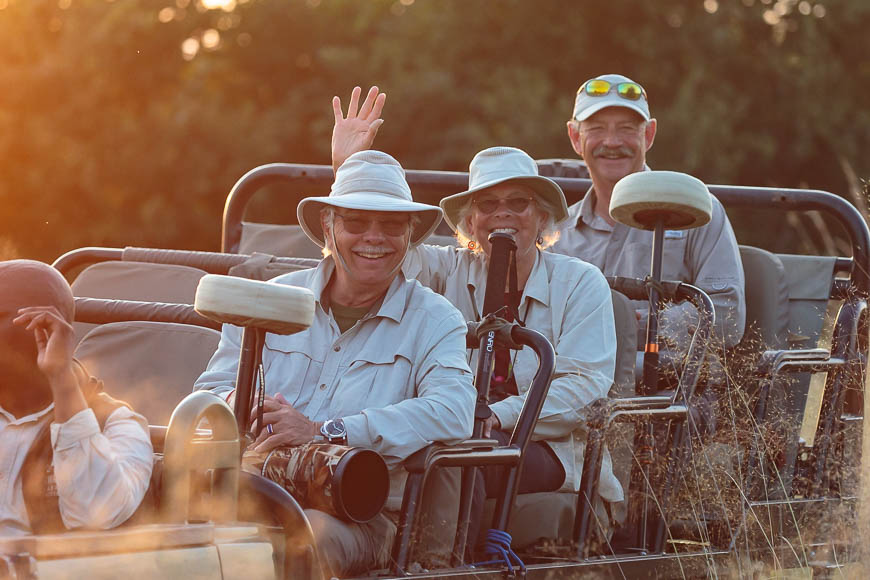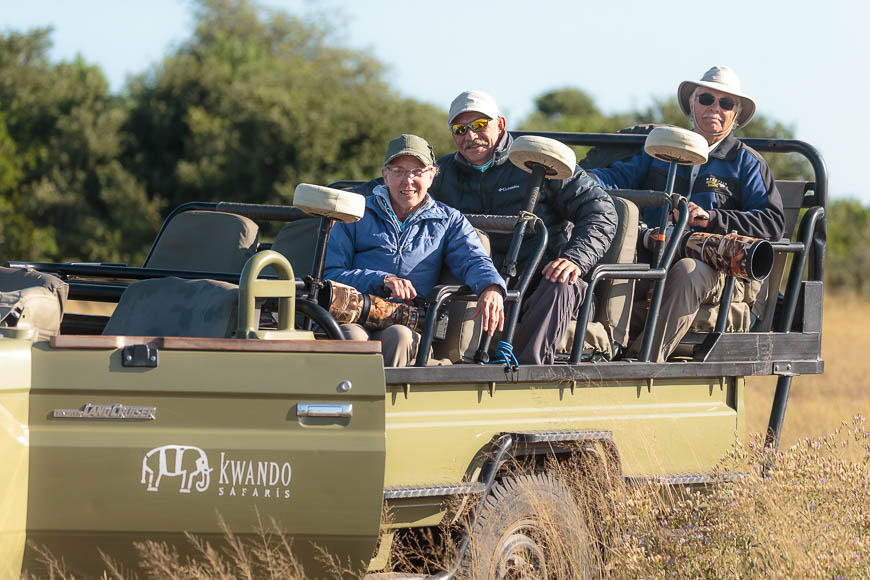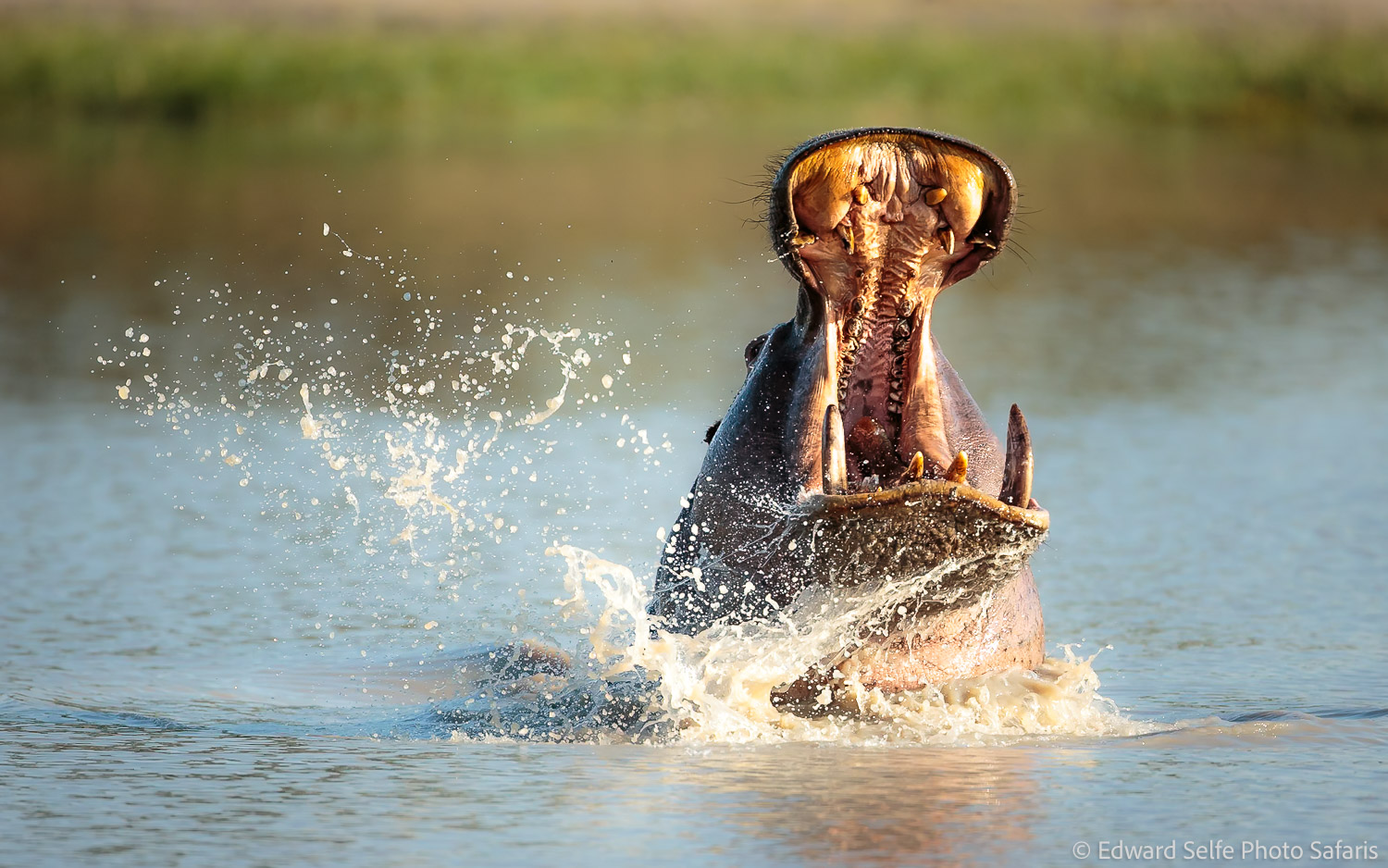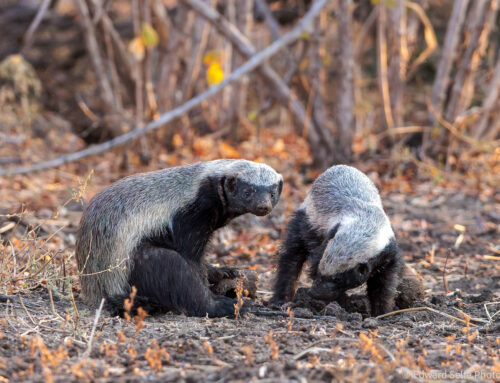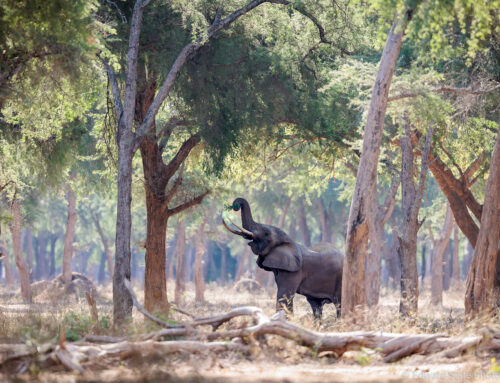I just returned from leading a 12-night adventure through 3 camps in the Okavango Delta with a group of repeat guests from the USA. It’s a familiar story, but this trip had been planned in 2018 for 2020, then been postponed twice and finally taken place in May 2022. The group had to carefully consider the risks of travelling again, even as COVID begins to impact the world less heavily, but decided to go ahead with the trip. After so long waiting, it was really great to see them again and to be back on safari and to have the chance to explore such a famous area.
During the trip, I was keeping a daily diary which I shared on my Instagram page. If you are a user of Instagram you can click on the graphic below which shows (desktop view on left, phone view on right) where the daily diaries (which only show for 24 hours) have been saved into a highlight which can be viewing for longer. These highlights are the best way to share in the experience that we had; start with the 1st Okavango Delta highlight (labelled Pt1) which is the 4th highlight from the left, and work left. There are videos, stills, behind the scenes shots and some thoughts and commentary from me.
However, I know that there are some followers who prefer to follow on my blog or are not connected on social media, so you will find the familiar “images & captions” report below. I hope you enjoy sharing the 12 days with us. As normal, I have somewhat summarised the sightings, knowing that a full minute-by-minute account would take too long to read, and certainly too long too write!!
Botswana’s Okavango Delta is a desert, made up of Kalahari sand, nourished by the annual arrival of the flood waters of the Okavango river and its tributaries. These begin in Angola, cross Namibia and give out into a “bowl” created by a series of fault lines in the earth. The sandy under layer makes access to all areas possible, so long as the water does not get too deep! Each year, the rains bring life during November to April and then the flood waters arrive in May & June. This annual cycle brings incredible life to an otherwise barren desert land.
Our first camp was Kwando’s Splash Camp in the Kwara concession, in the north-eastern part of the delta. Its southern boundary runs through wet channels of the main delta, bordering the Moremi Game Reserve, and its northern sections reach almost to the Linyanti.
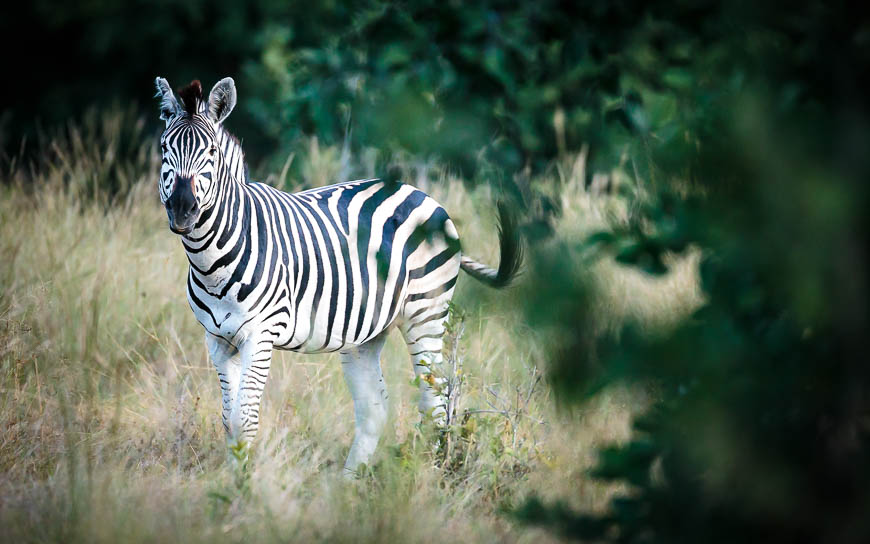
Our first outing the bush started steadily. We chatted about putting foliage in front of the subject — as long as it is far enough in front — to provide a blurry frame around a subject.
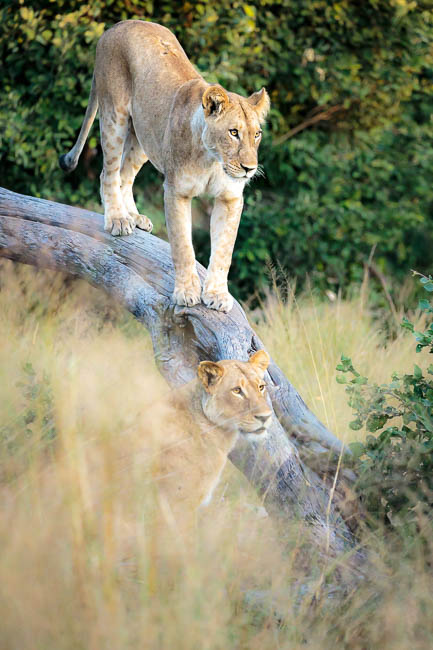
And then it was all about lions! We visited a spot where the local lion pride had killed a zebra the night before. The lions had moved off from the carcass (apparently the male had barged in and stolen the carcass but he was deep in a thicket so we weren’t sure!) and were running around playing. There is one sub-adult female in that pride who is very playful and she kept encouraging the others to join in! So rewarding to have active lions, rather than lions who are snoozing off their zebra feast.
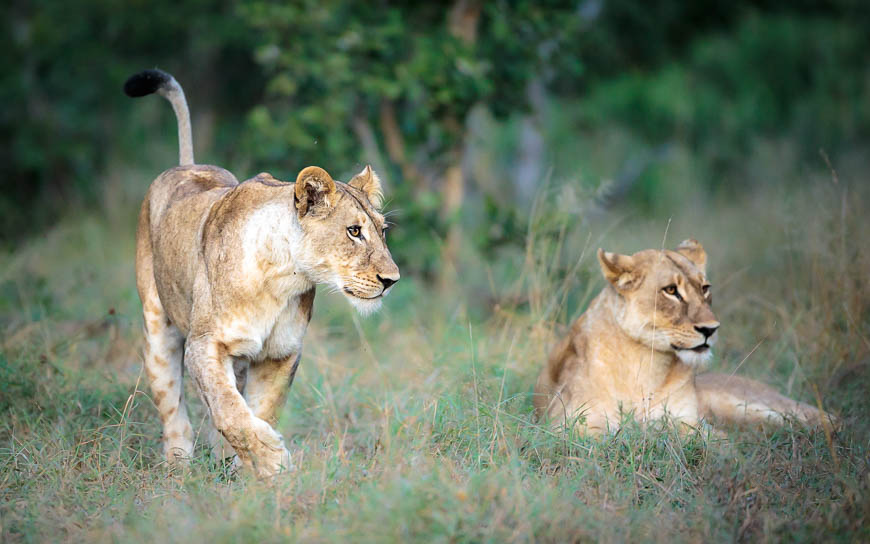
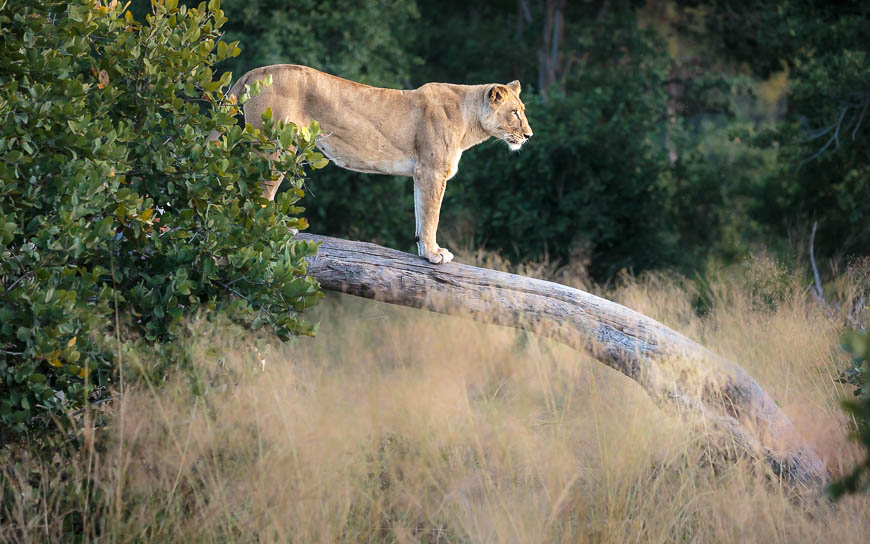
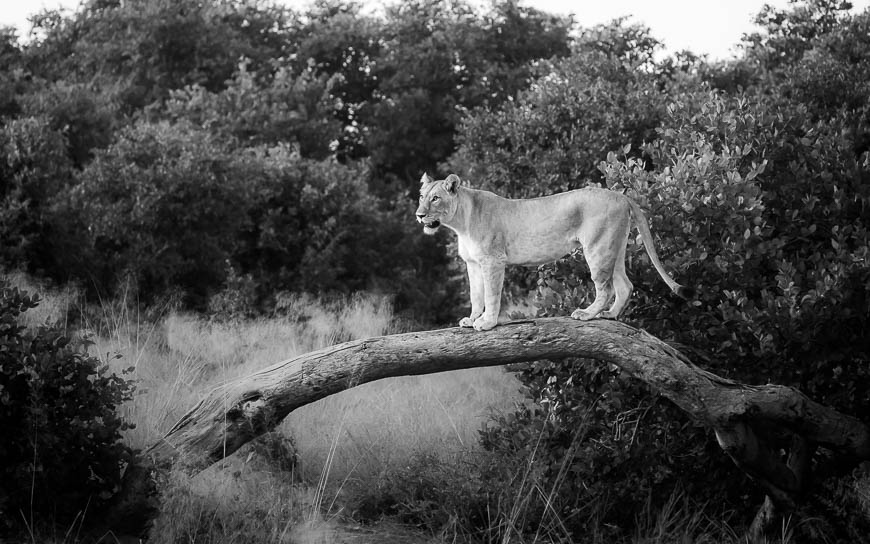
The long grass obscured our view sometimes so, when I saw this fallen tree, I suggested we sit near it and wait. Duly the lions came and used it as the focal point of their games of chase.
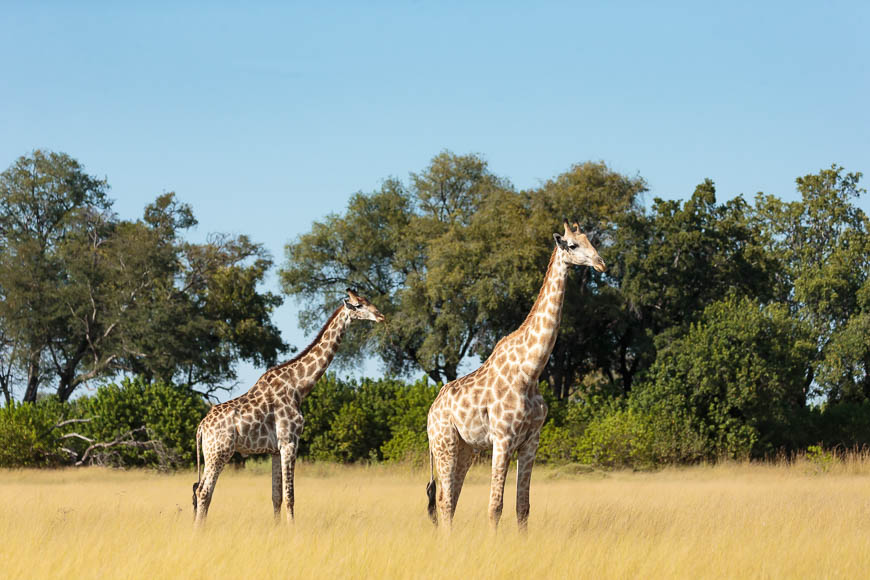
It’s particularly interesting to note the differences in species, behaviours, landscapes and lighting conditions of an Okavango safari compared to home in Luangwa. I’ll return to this theme throughout the write up. These giraffes were standing in an open field, apparently feeding; turned out they were picking wild Lucerne bushes from the ground and chewing them….long necks can also be used for eating things “faaaaaarrrr away” as well as up high.
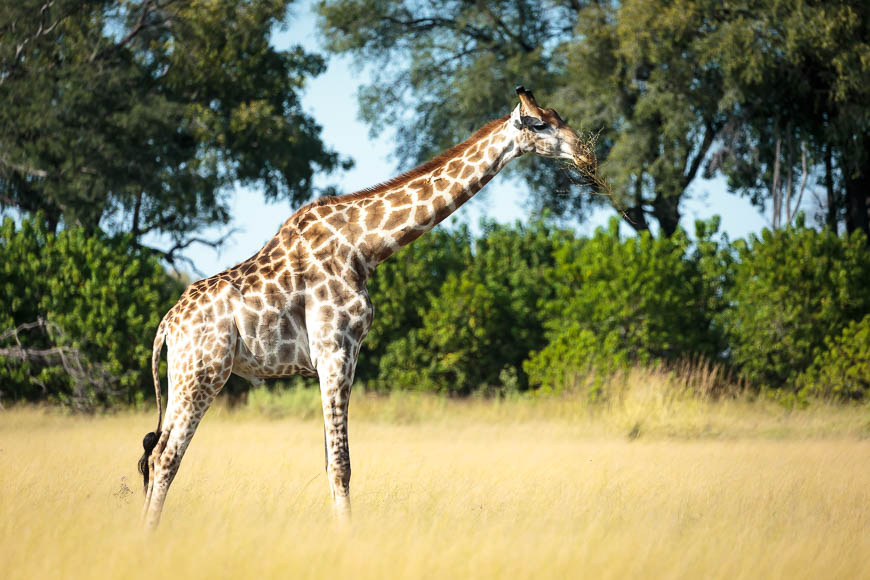
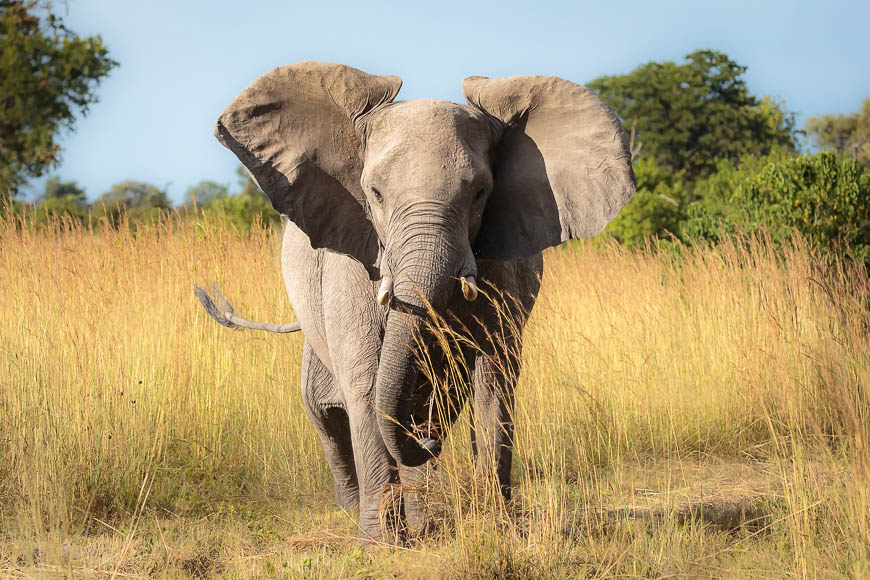
In general the animals of the delta are very calm around vehicles, as would be expected in an area where safaris have been conducted for a long time. But this cow elephant took against us and we had to sit tight and keep quiet while she worked out her concerns.
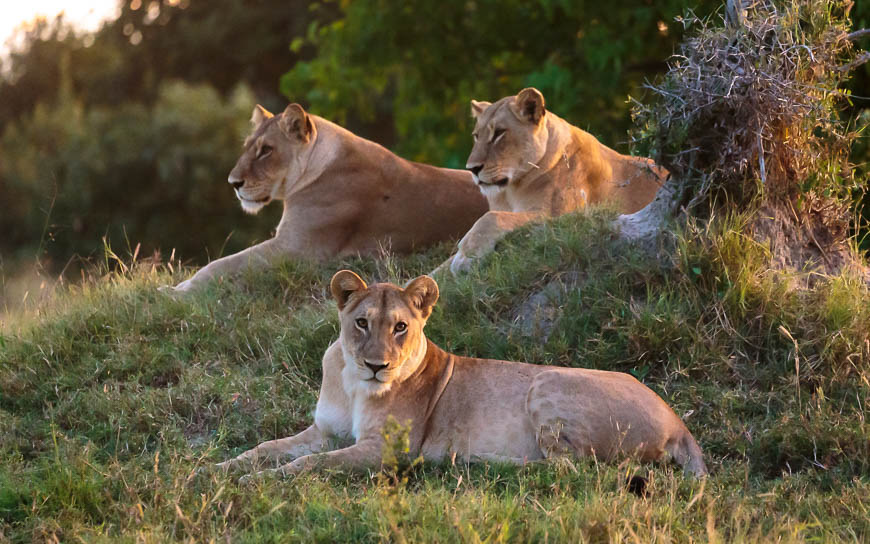
We had great value from the Kwara lions; on this occasion, we found them sitting on a termite mound as the sun set. The light was fading fast, so we chatted about banking a shot and then dropping the ISO steadily to get a better quality image; in the end, this shot was taken at ISO 800 with 1/20sec shutter speed. With proper camera support, and a static subject, we joked that this was landscape photography!
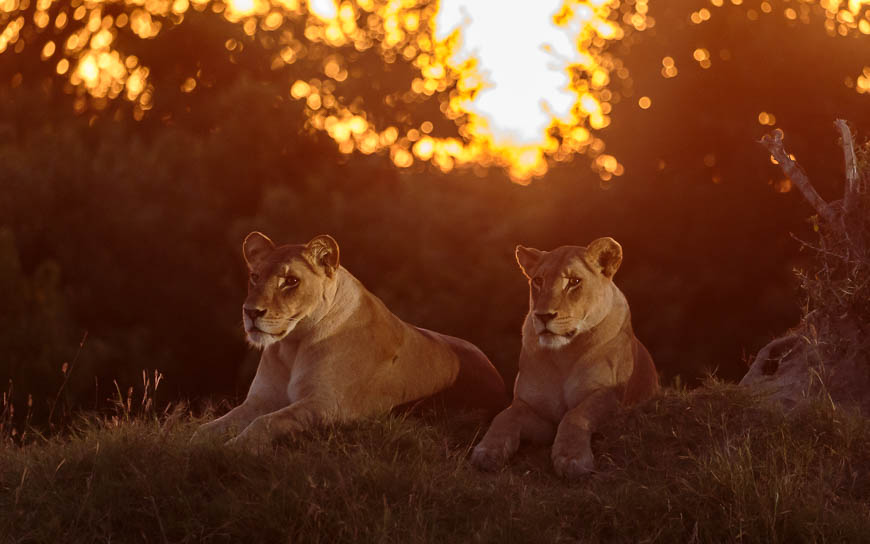
One of the pleasures of a private area is the chance to spend a long time on sightings. Only once in the whole trip did we have to leave a sighting before we wanted to, and on this occasion we sat with the lions, using the soft sidelight from another vehicle’s spotlight to add detail on the faces of the lions, while we kept the sunset behind.
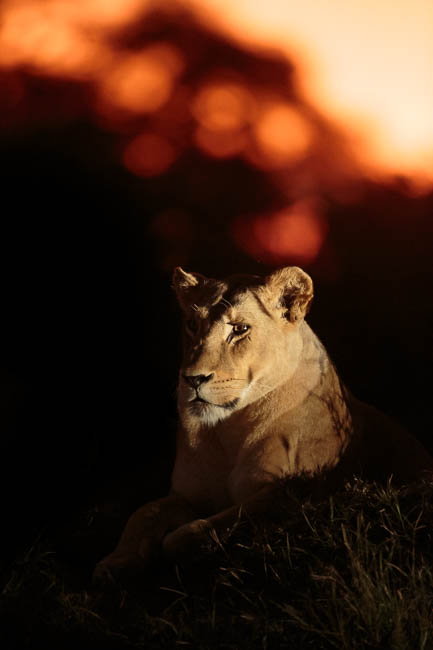
As the light dropped, this became a more extreme effect.
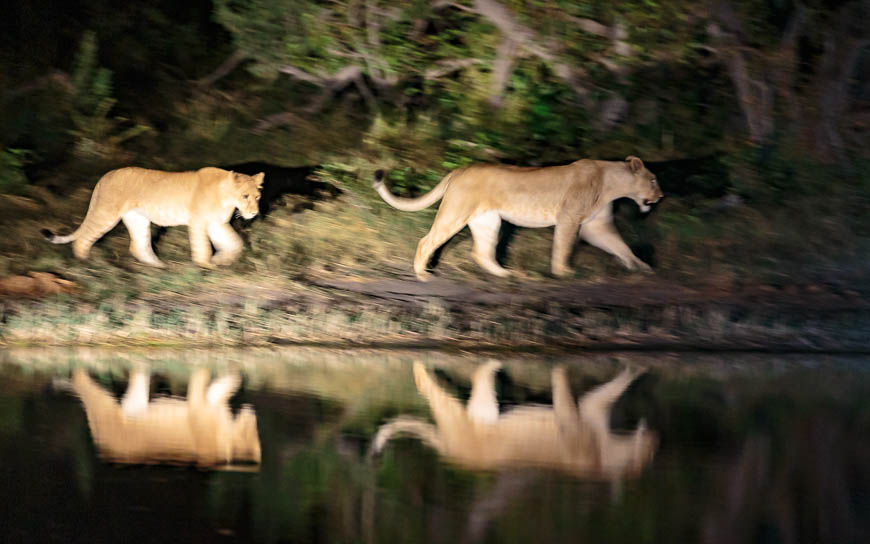
We followed the lions that night for a while…..
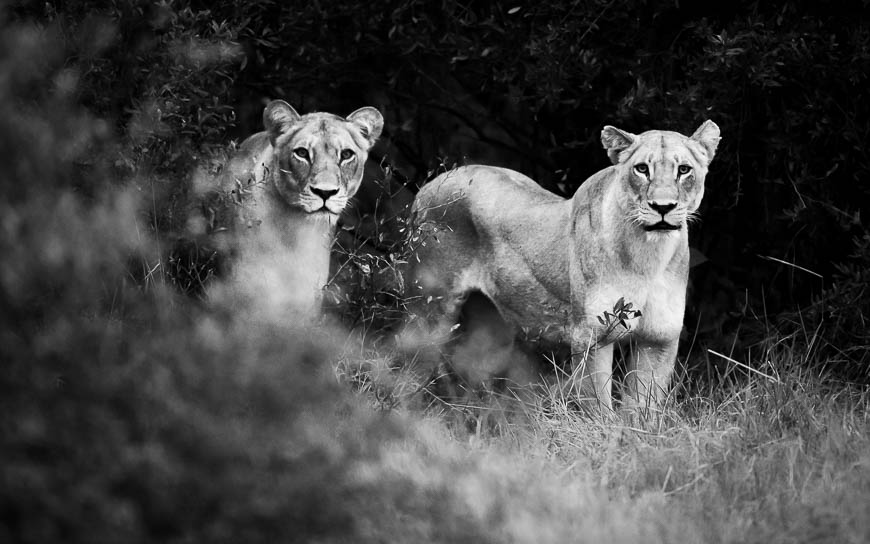
….and then again in the morning (check out my IG story for an in-camp encounter with the pride).
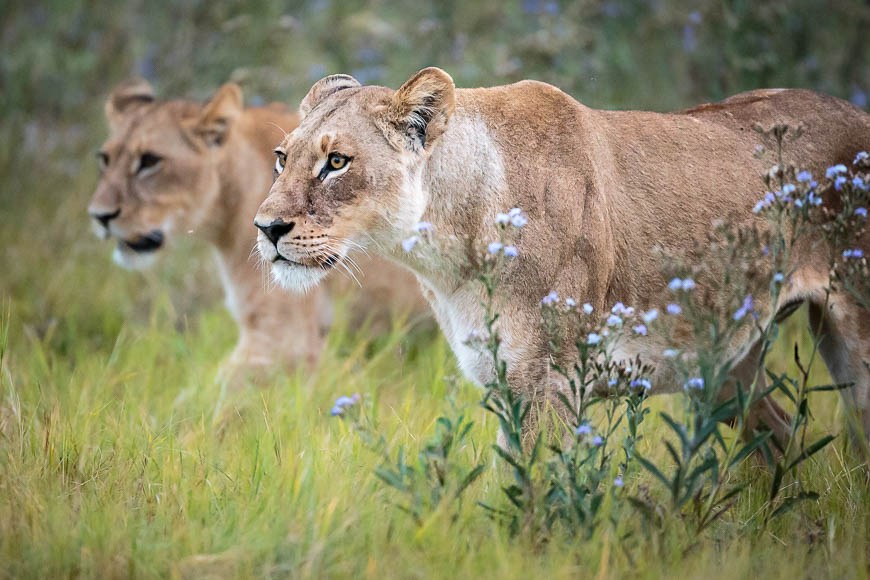
They were keen to hunt, but had chosen a place where there was little game…
When the light starts to get bright, later in the morning, the long grass still acts as a soft surrounding and backdrop for images. This compares favourably with some areas, where thorny/thickety backgrounds become increasingly ugly as the light gets brighter. Just shows, as is well known, that the background and setting of the shot are at least as important as the subject.
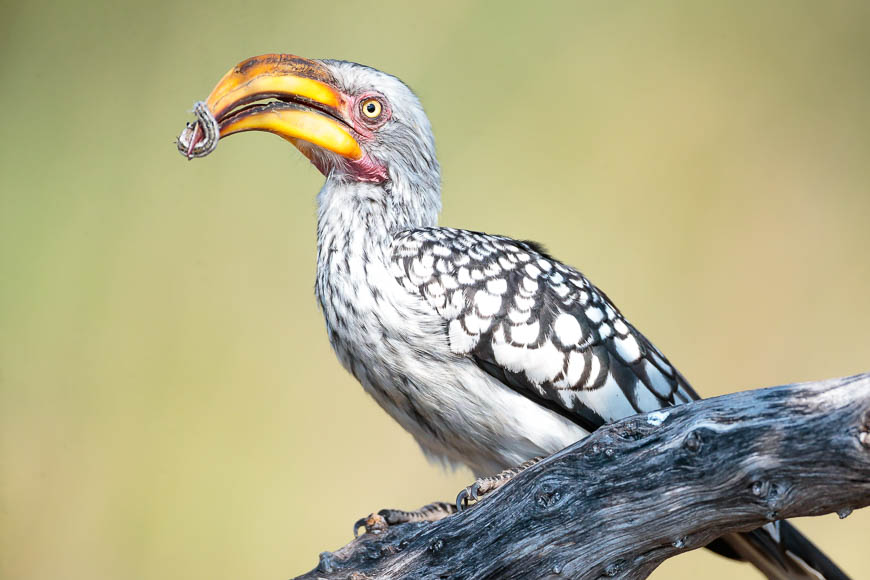
Pausing with his caterpillar prize, a Yellow-billed Hornbill takes a breath before heading back to a nest hole in the nearby trees.
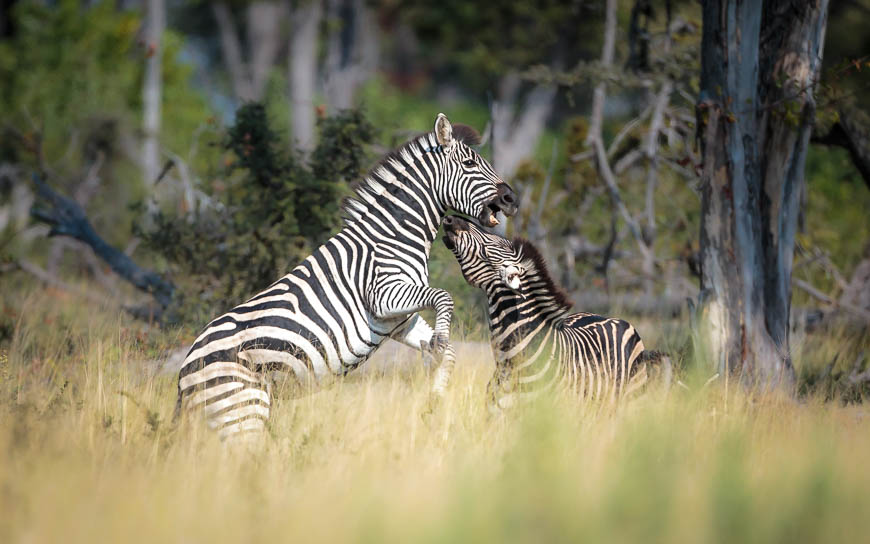
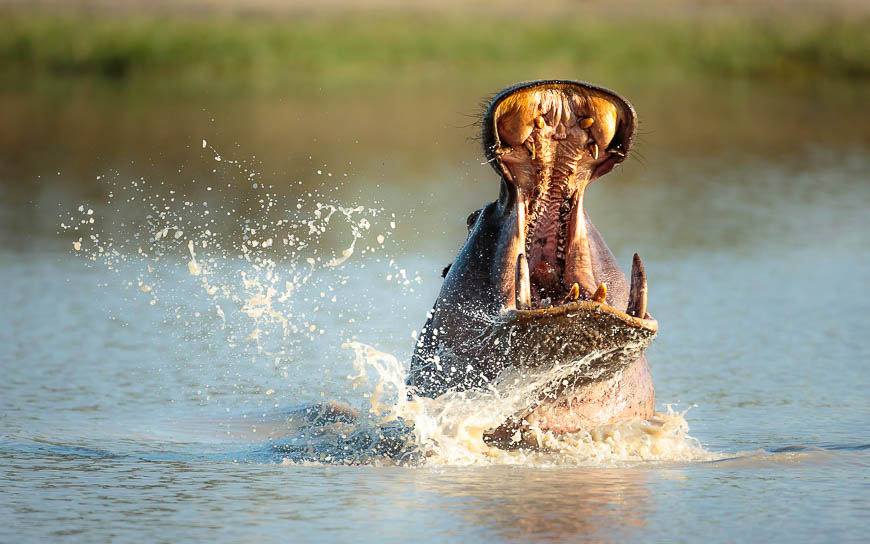
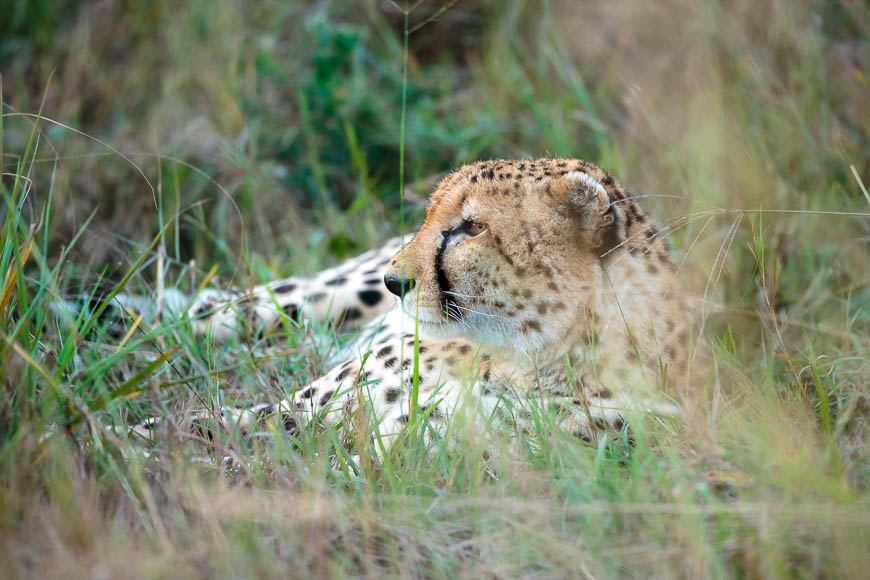
Our final full day at Splash brought us a sighting of Mr Special, an old cheetah who has held that territory for around 7 years. That is a long time for a cheetah and, while he didn’t move much (at all!) it was nice to spend time with a venerable character.
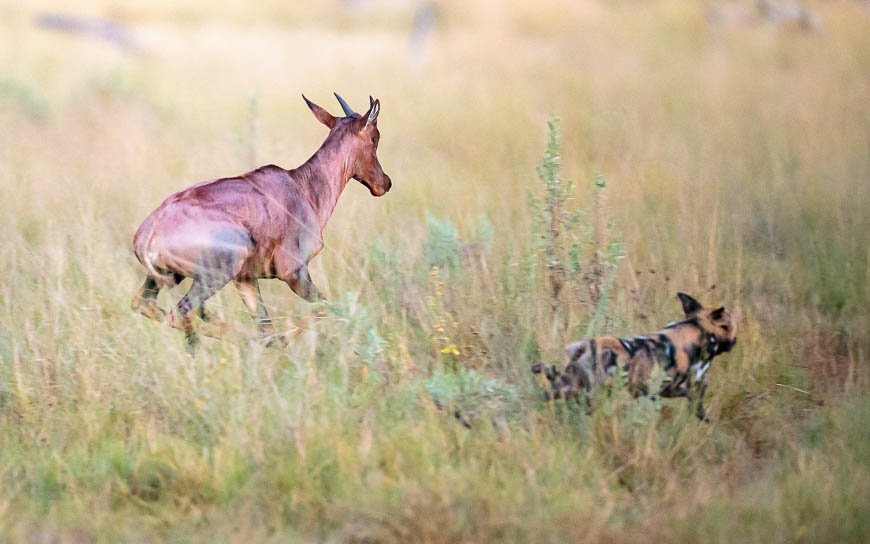
The last full day also gave us an intense wild dog encounter. We set out early in search of the pack, and met them as they started to chase a young tsessebe. They were serious about the hunt….
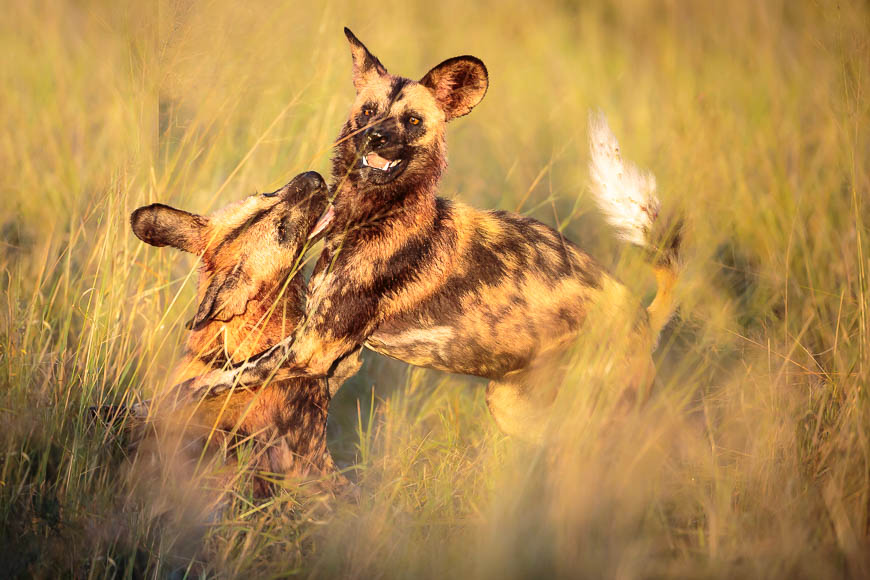
…and we followed successfully, finding them just after they had made the kill. The long grass and graphic viewing was not great for photos, but a fantastic experience. As they started to socialise, we took more photos, including some memorable instants….
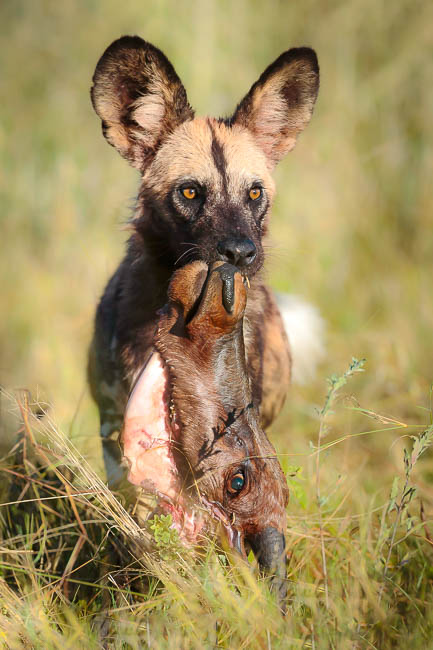
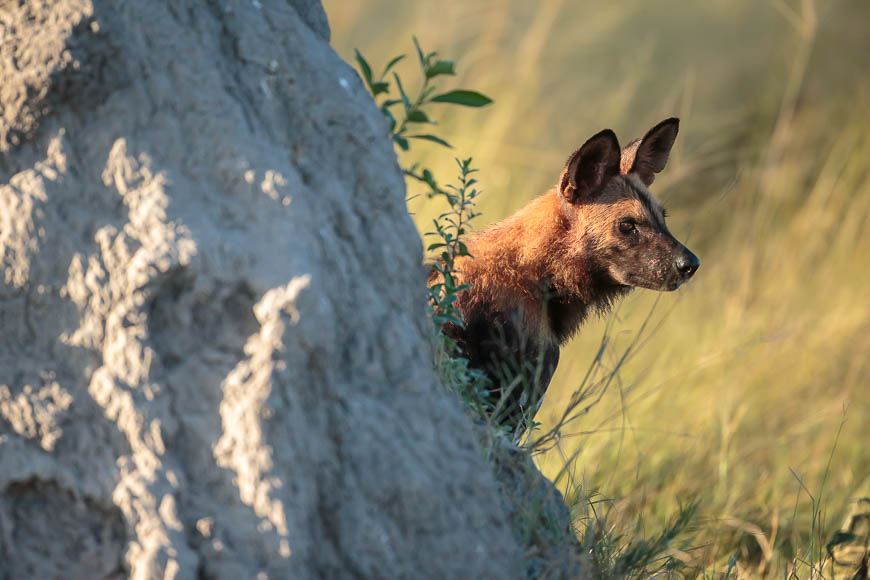
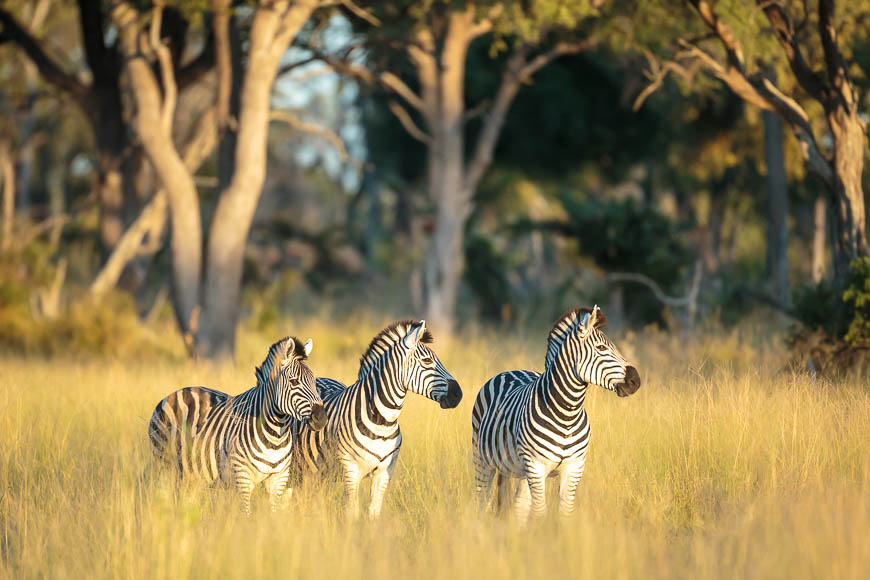
The zebras, in lovely morning light, stood around to watch the action!
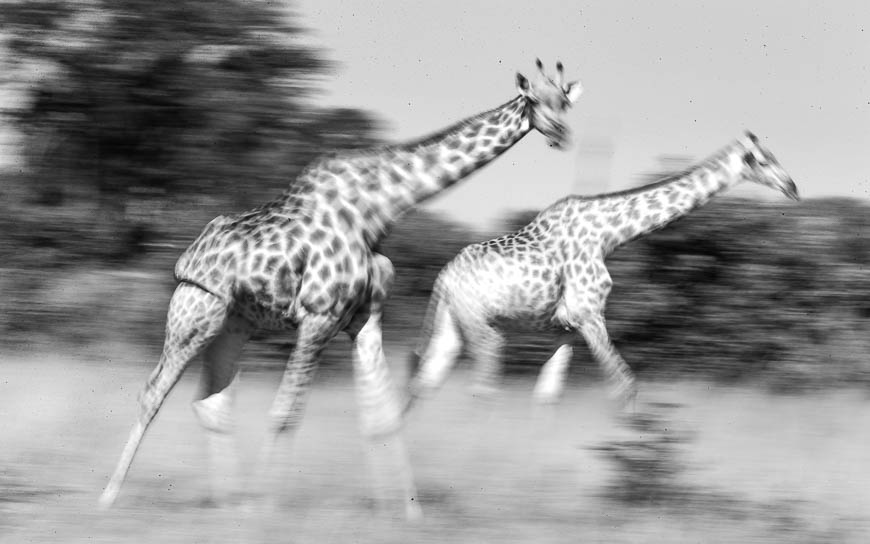
How to follow that… Well we tried, of course, and spent the afternoon in a new area, playing with panning techniques and gorgeous cloud formations.
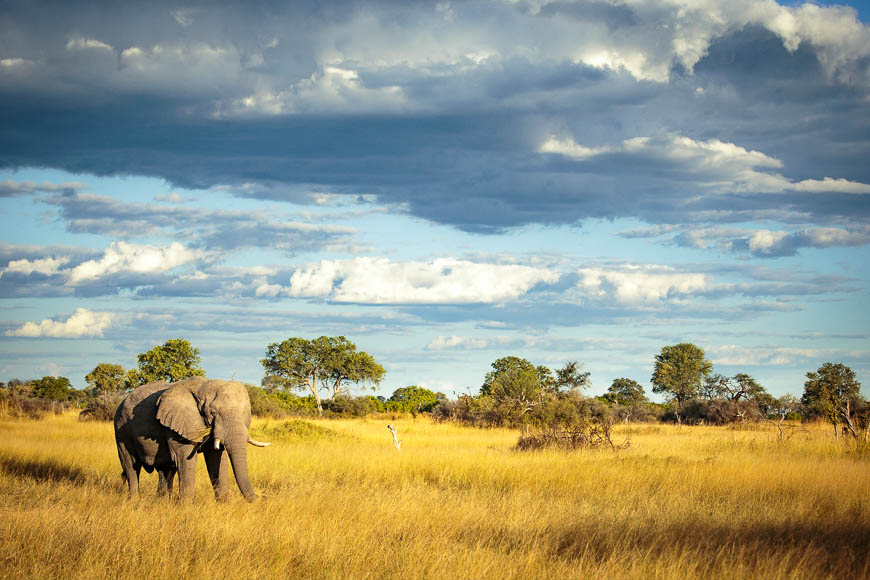
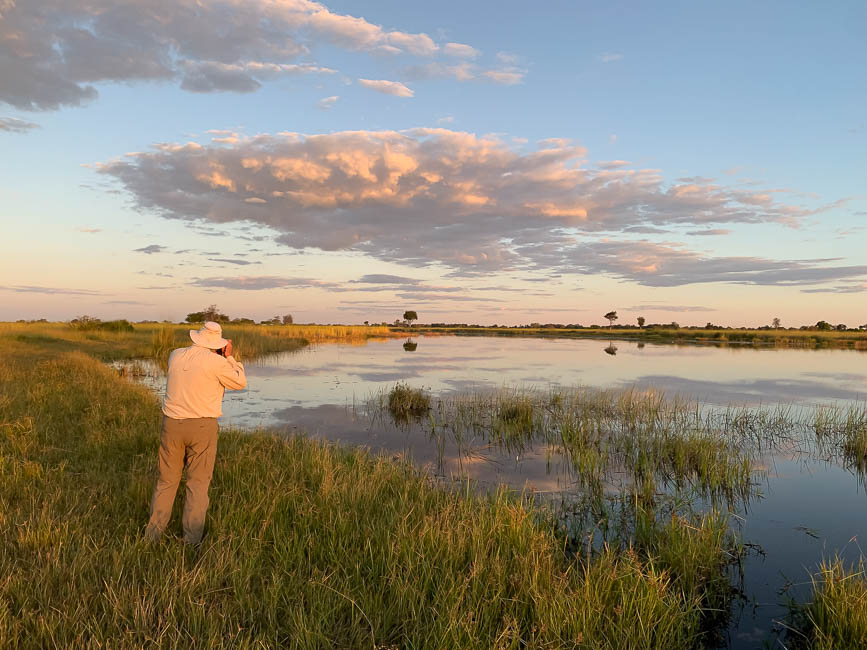
A stunning sky made for some memorable landscape shots at sunset.
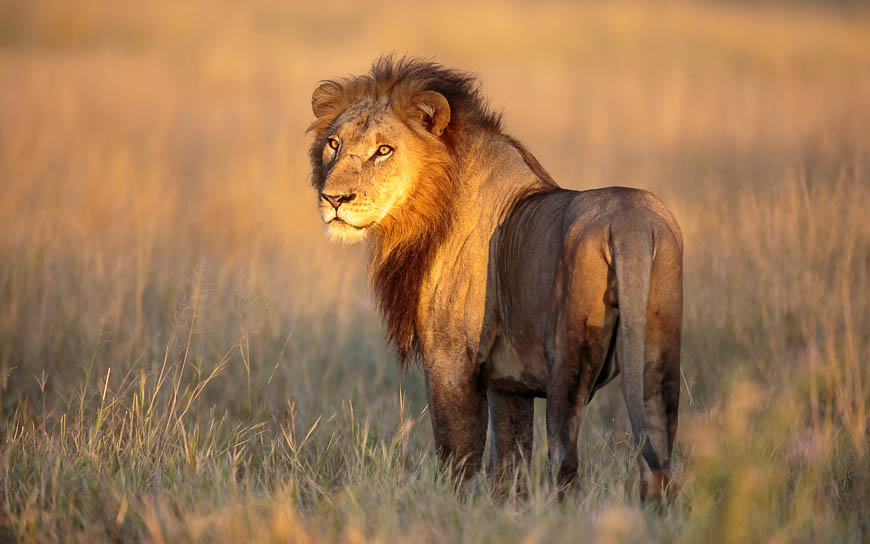
But Splash Camp wasn’t done with us yet. We took a morning drive to the airstrip, with our luggage, and came across the 5-strong coalition of males which we had heard calling in the night. We spent the best of the mornign with them before continuing to catch our flight to the Duba & Mapula concession.
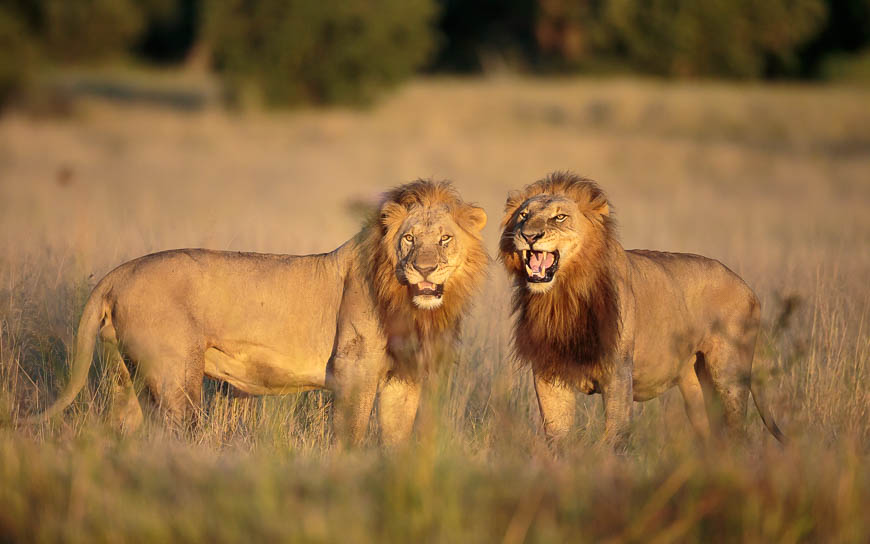
As they arrived, the females set off into the thickets with the cubs and the males hung around to scent urine.
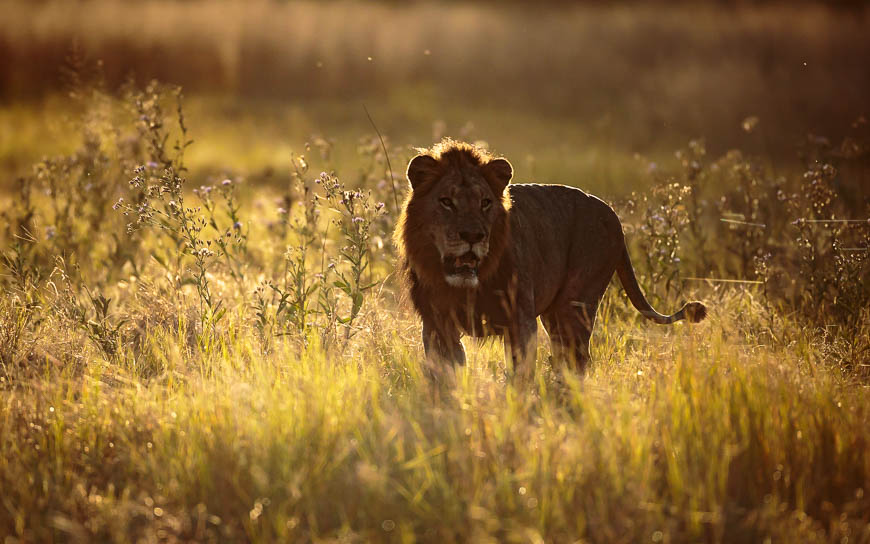
Satisfied with our standard shots, we tried hard to get backlit “halo” images of the males against the sunrise. This is a harder technique as the shape of the lion has to be distinct and they were moving around a lot, but we all got a few images.
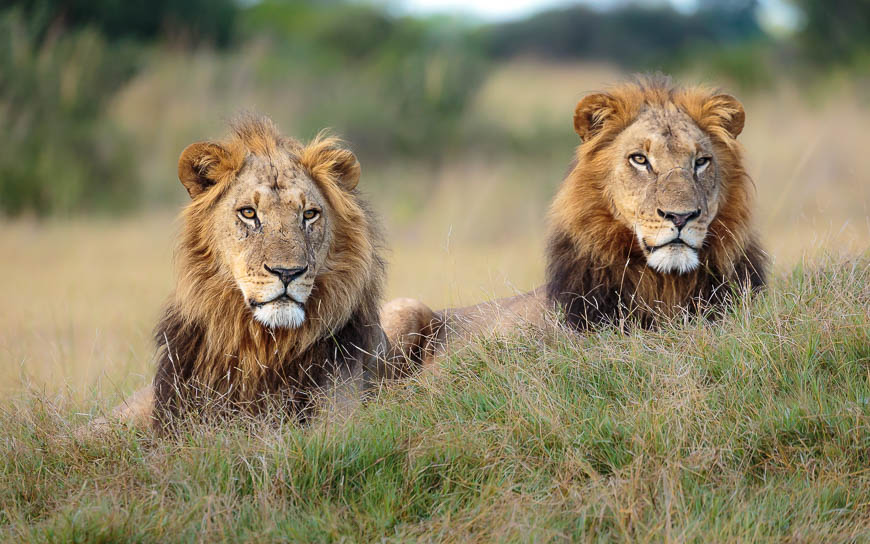
The morning ended with two of the males resting on a mound, observing while we repaired a problem with our vehicle! There are worse places to have a minor breakdown!
Duba Explorers Camp is a short hop (25 minutes) west of Kwara. We landed at Omdop and were transferred to the camp, over flooded channels, by small helicopter! Check out my Instagram story for more on that!
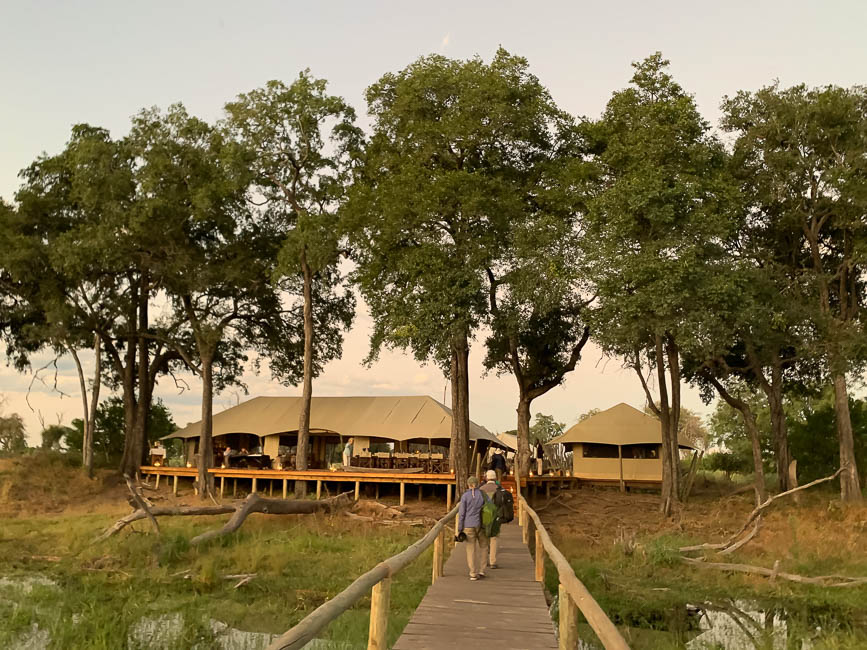
Arriving at Duba Explorers Camp
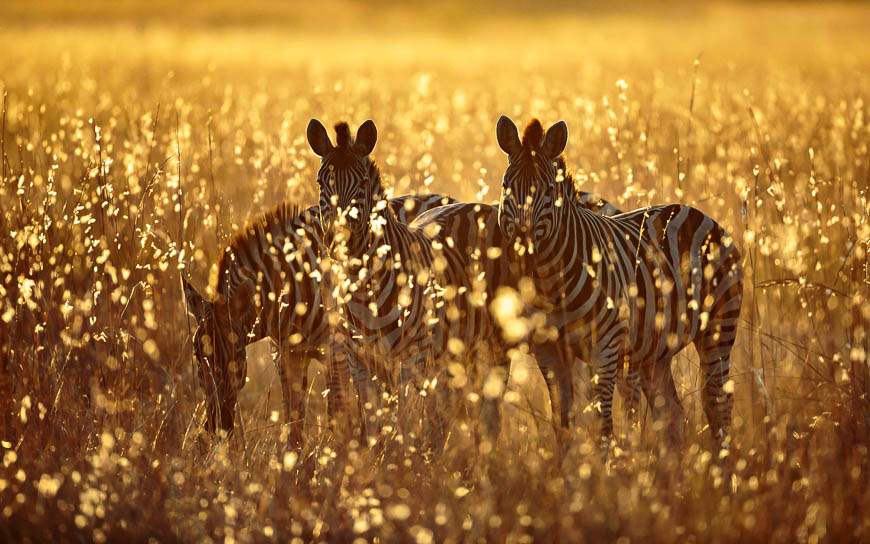
The lighting in the surrounding grassland was spectacular that first evening, giving us a beautiful and memorable encounter with zebras backlit against the gold.
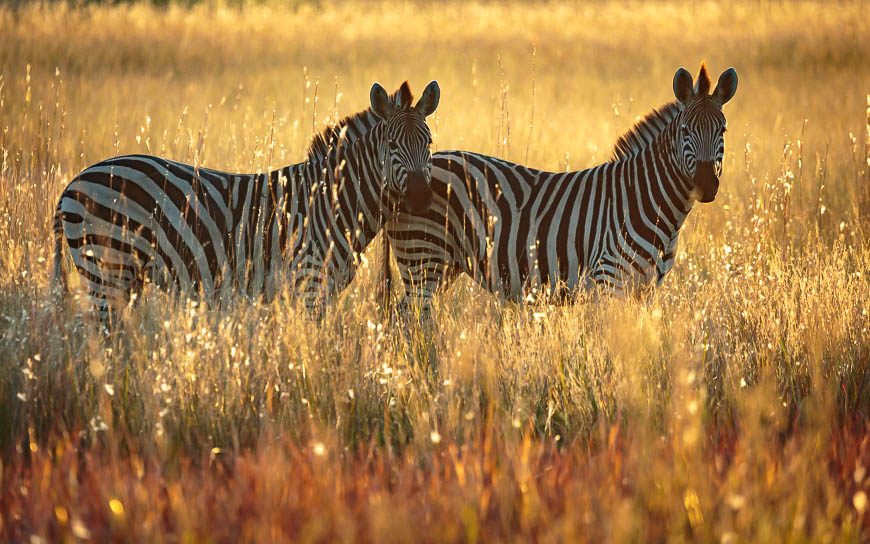
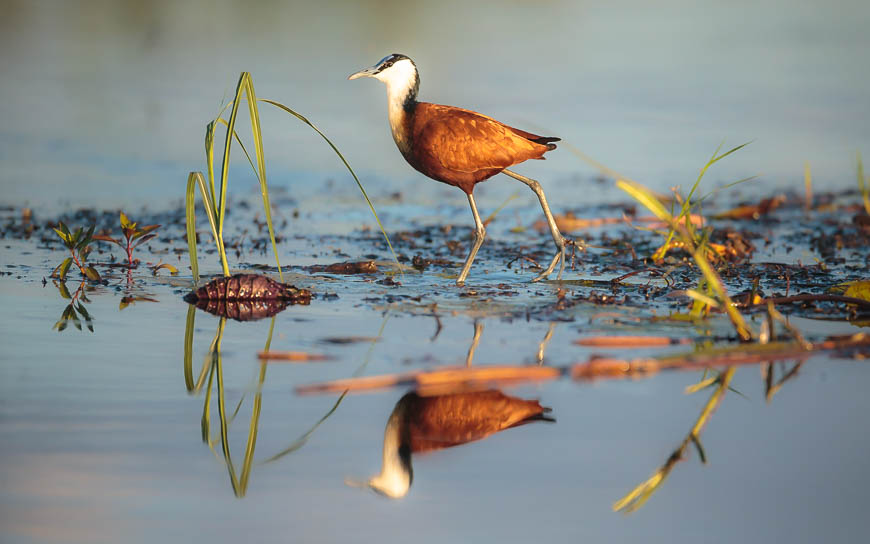
Being further into the delta system, the flood waters have already reached Duba so the area is flooded in some parts. We wanted this contrast to the drier areas, and enjoyed the views and the chance to go in a boat on the channels.
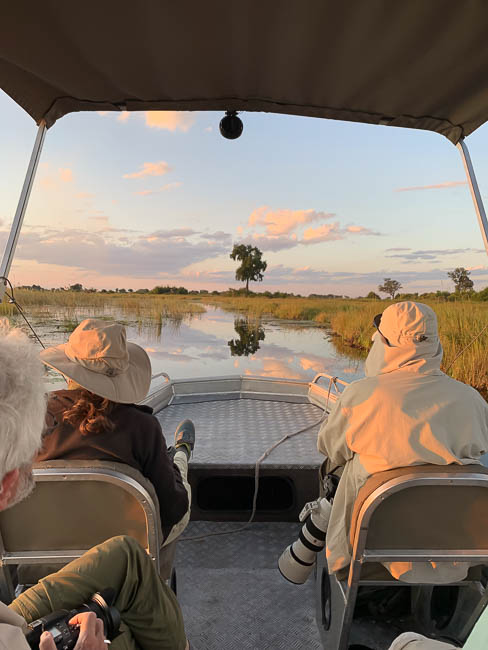
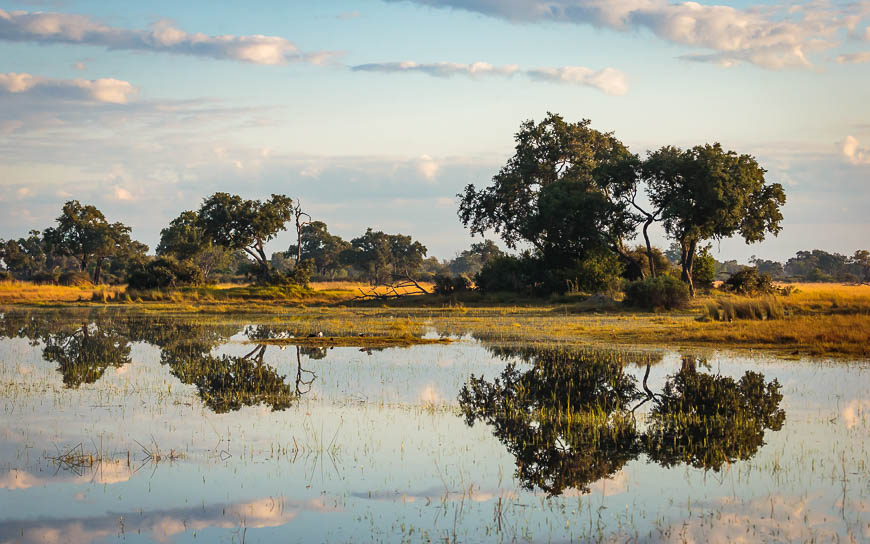
Predators also use the high ground to get out of the water; this pack located lechwe prey from the top of this termite mound and then spent the morning pursuing them, unsuccessfully, through the flooded marshes.
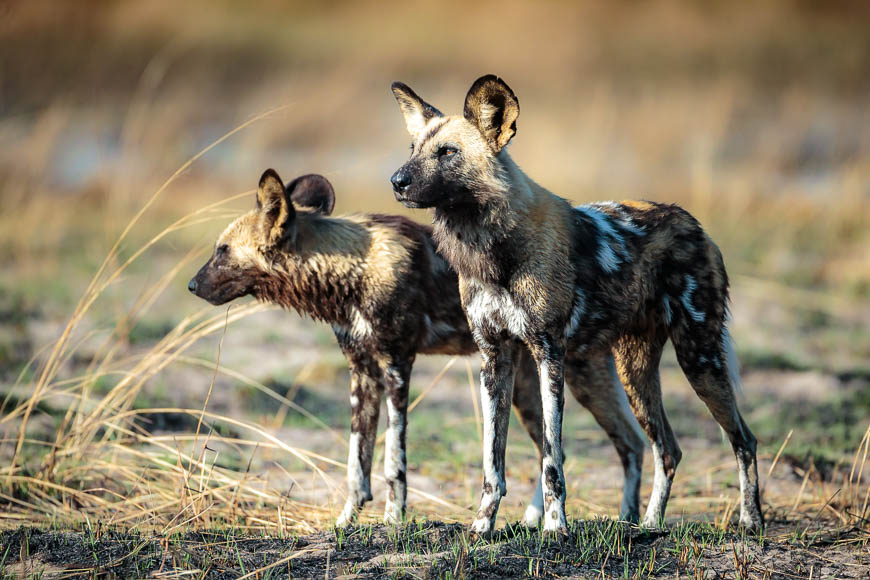
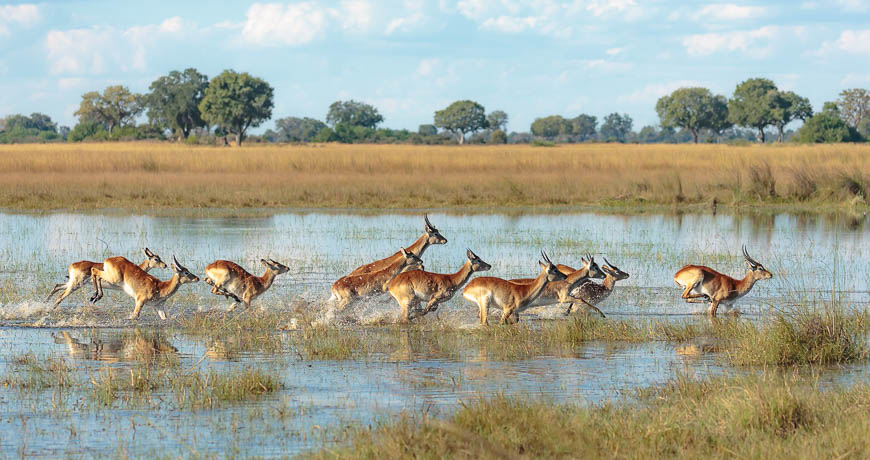
Lechwe escape from predators by taking to the water – they are unconcerned by deep water and jump gracefully through thick and tangly reeds using their elongated hooves to spread their weight.
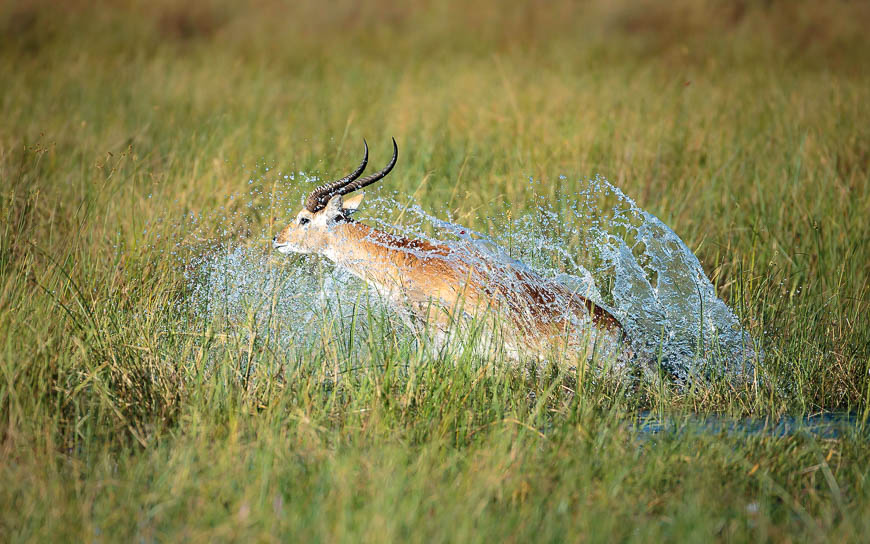
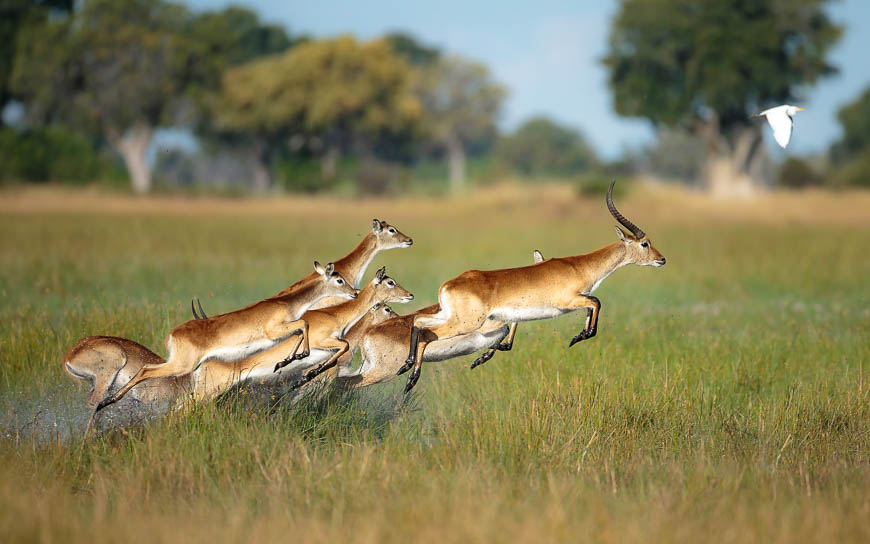
When a whole herd (more than 80) decided to cross a channel, we chose a spot and took the chance to photograph them as they leapt over.
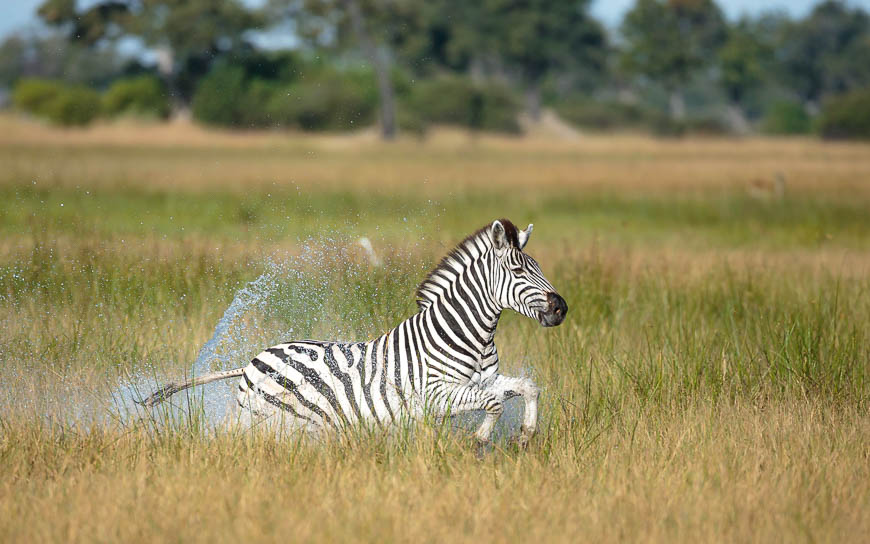
A startled zebra also splashed through the flood waters.
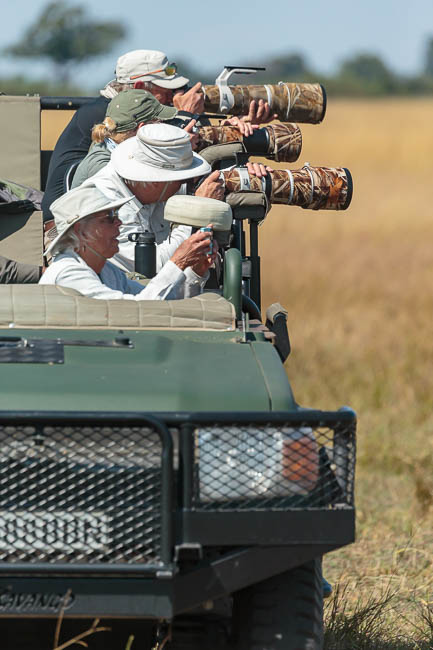
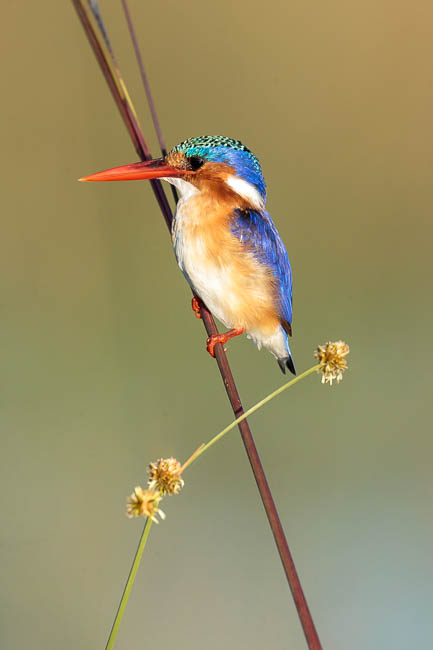
One morning we really pushed our luck and took 20 minutes to approach this malachite kingfisher. It was remarkably confiding and we ended up just 8m from it.
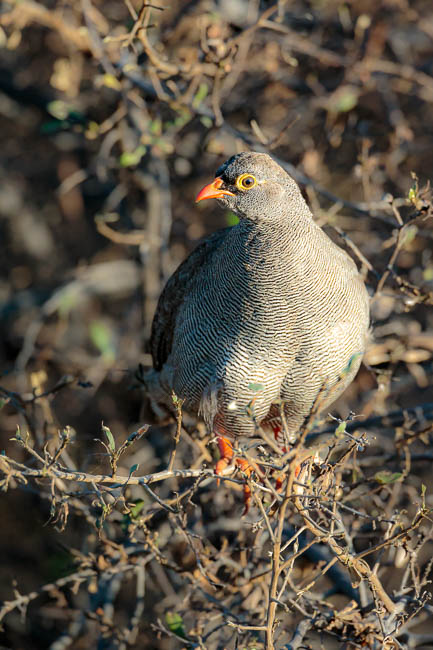
Not to be out-done a red-billed spurfowl posed for a photo nearby.
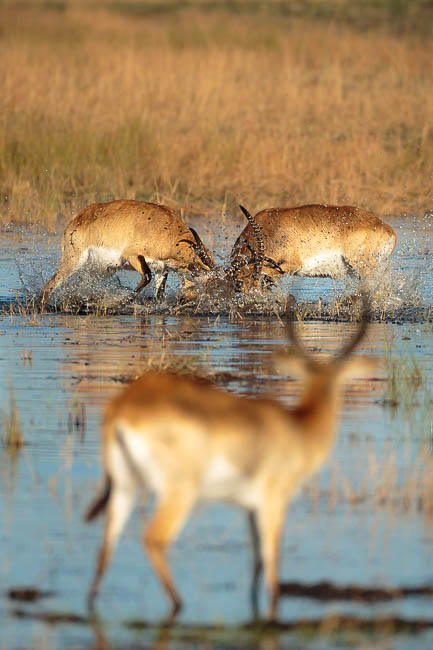
Our last morning at Duba gave us a series of lechwe sparring in the shallow water of a pan. I liked this image of a spectator placing his bets from the sideline.
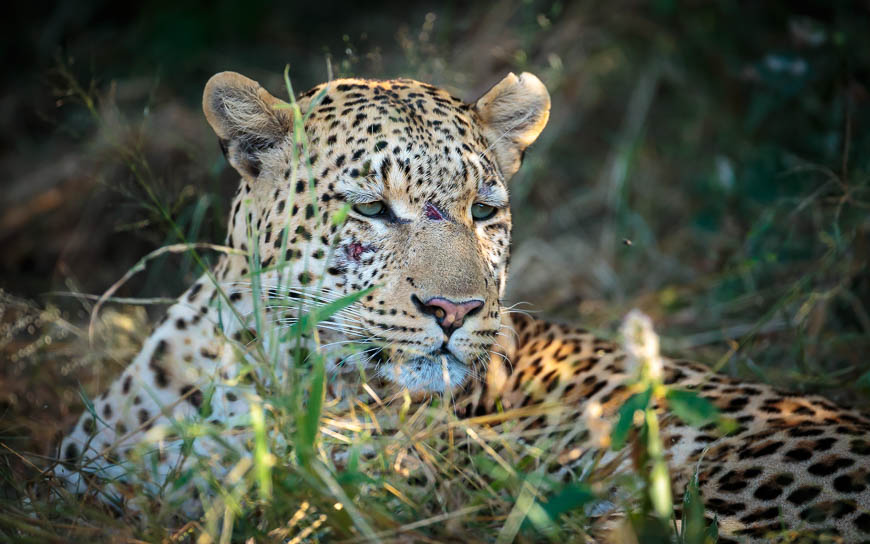
And we ended with a relaxed, if somewhat battle scarred, leopard just before we headed back to the camp.
Our third camp was the well-known Chitabe run by Wilderness Safaris. This is in the driest of the 3 areas with wide sweeping view, stunning palm trees and, as it turned out, excellent sightings.
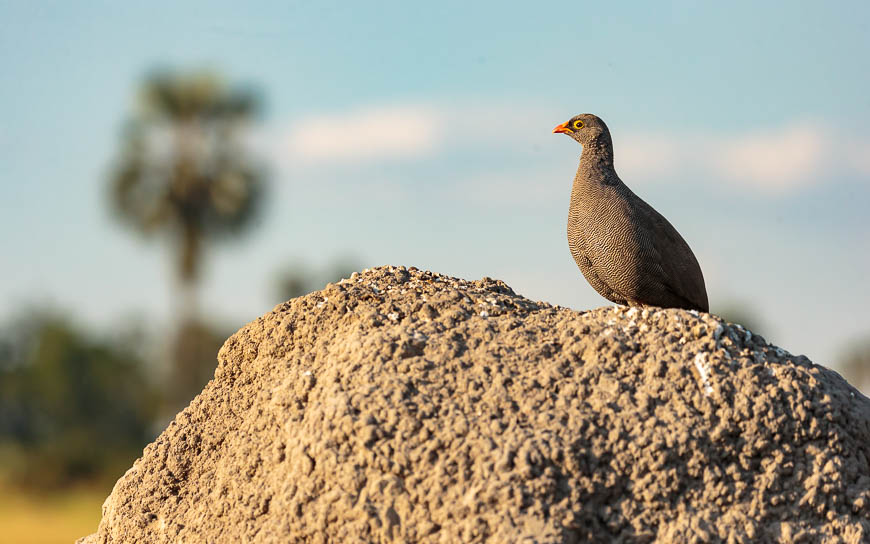
The Chitabe lions had also killed a zebra the night before, so we set off to find them on our first afternoon. Local sights delayed us along the way.
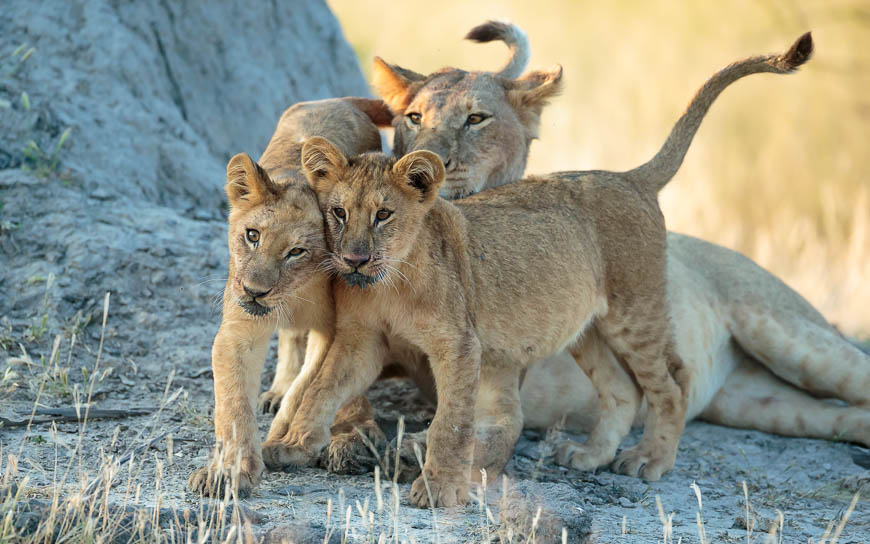
We arrived to find most of the pride on their way to and from a nearby waterhole, stopping to socialise along the way…
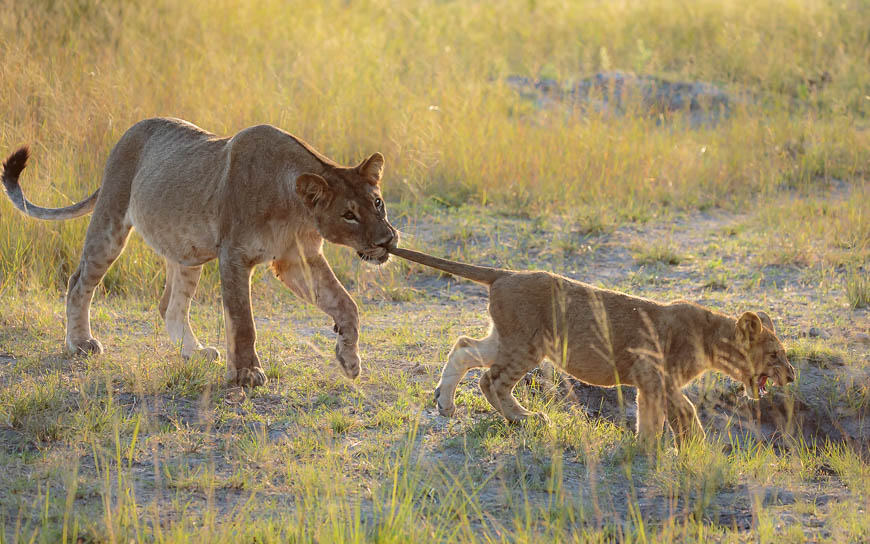
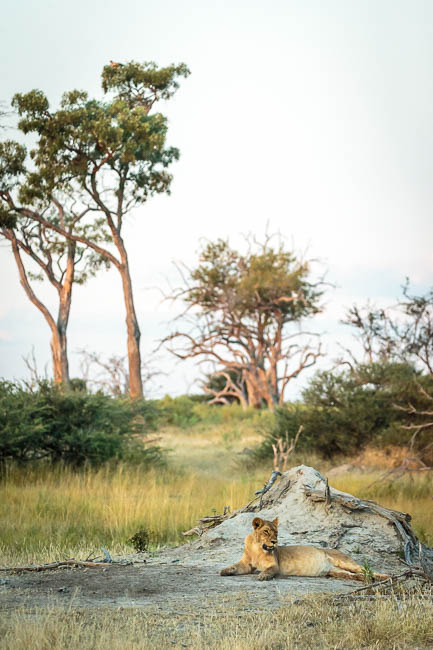
We spent the afternoon with the pride, returning to camp after sunset.
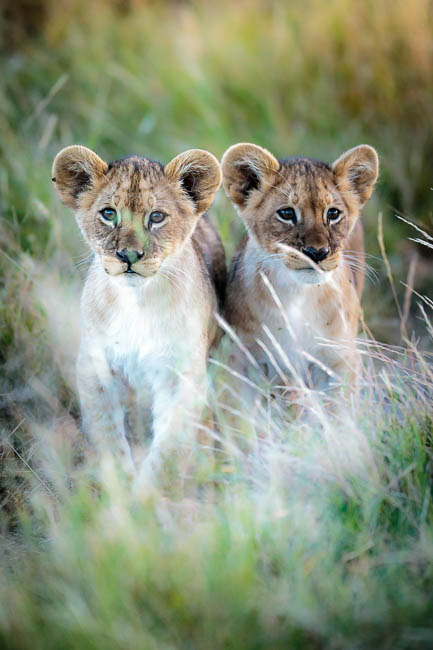
We went in search of the same pride the following morning but, instead, found the missing adult female and her tiny cubs!
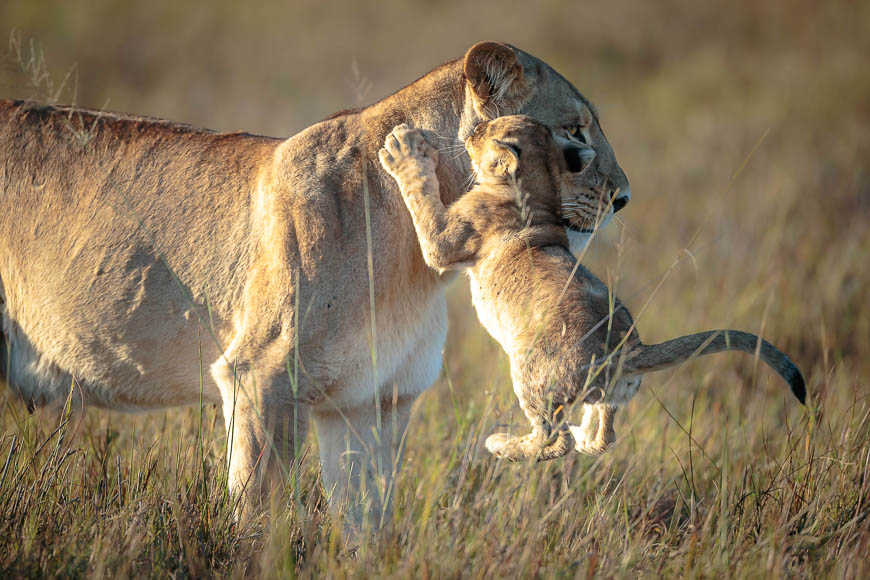
She was alone (the rest of the pride were nearby but we didn’t know it at the time) so we followed her as she took the cubs across an open pan.
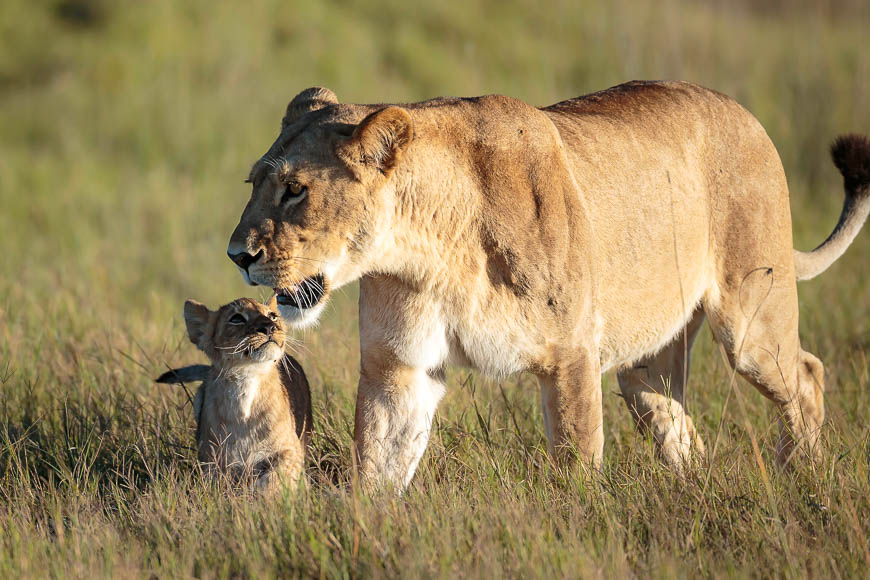
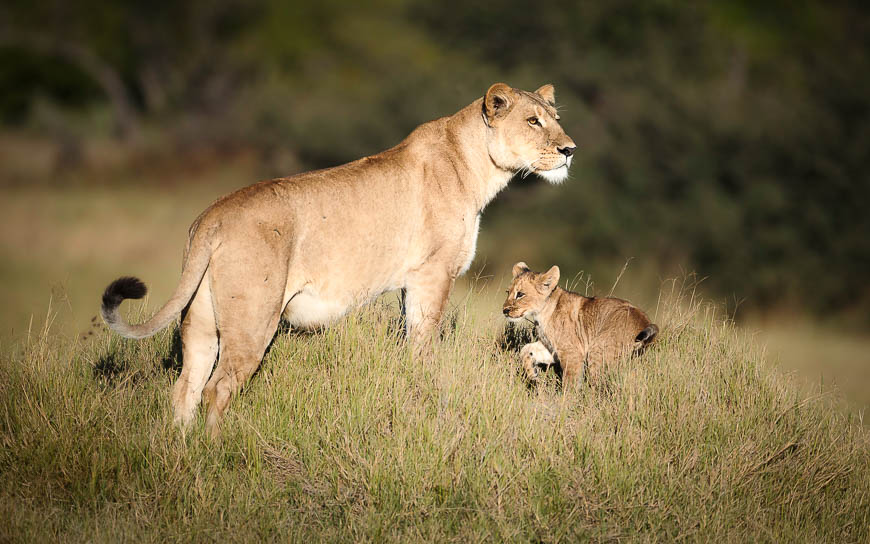
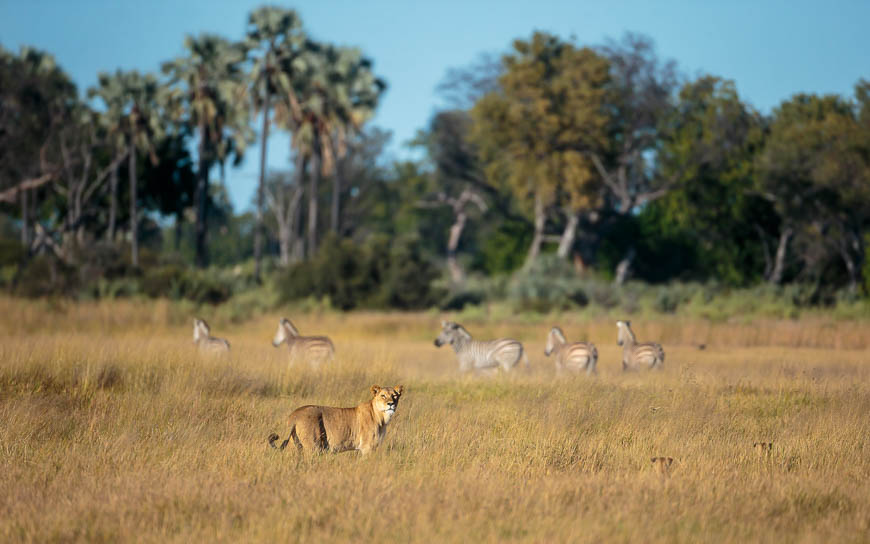
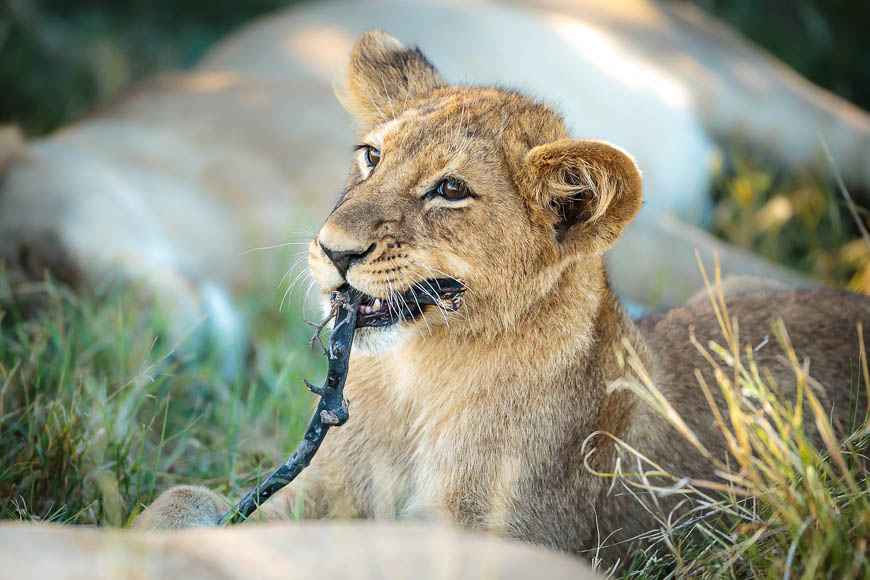
The rest of the pride were located once the mum and cubs had gone in to the thickets but, apart from one playing with a toothpick, the scene was mostly of zombie cats.
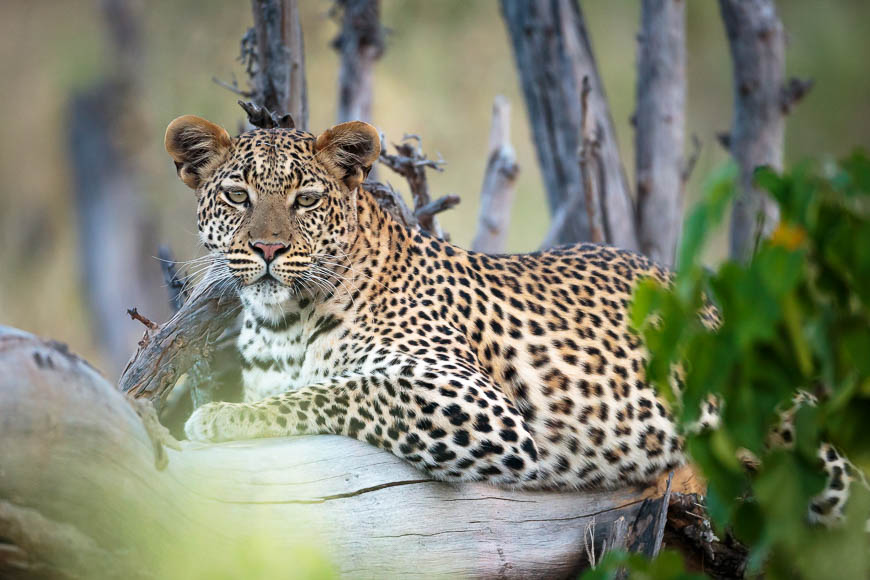
Concluding that the lions would sleep all afternoon, we went in search of leopard on the afternoon drive. A female, well-known to the guides, was found and gave us some great viewing. She was calling repeatedly, suggesting that she may coming into oestrus.
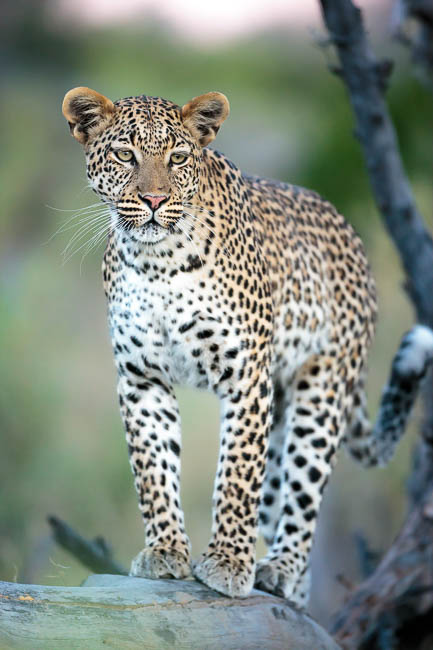
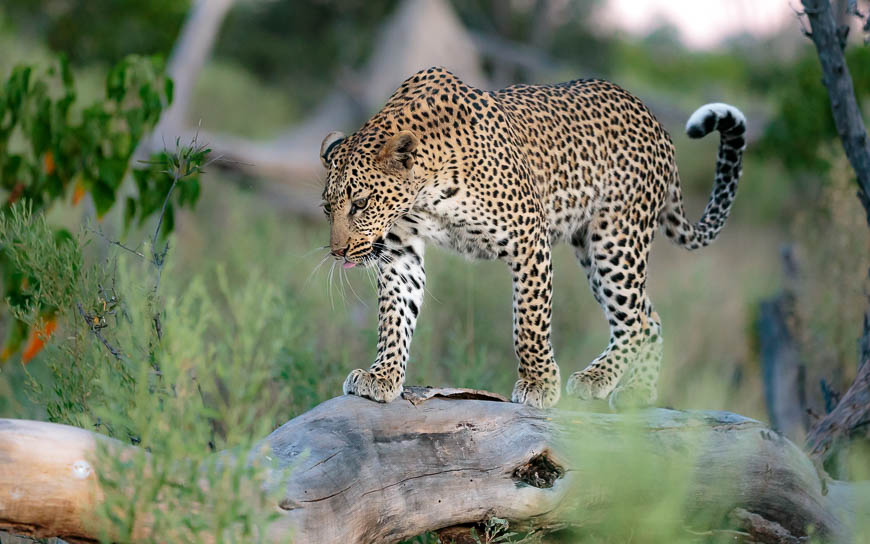
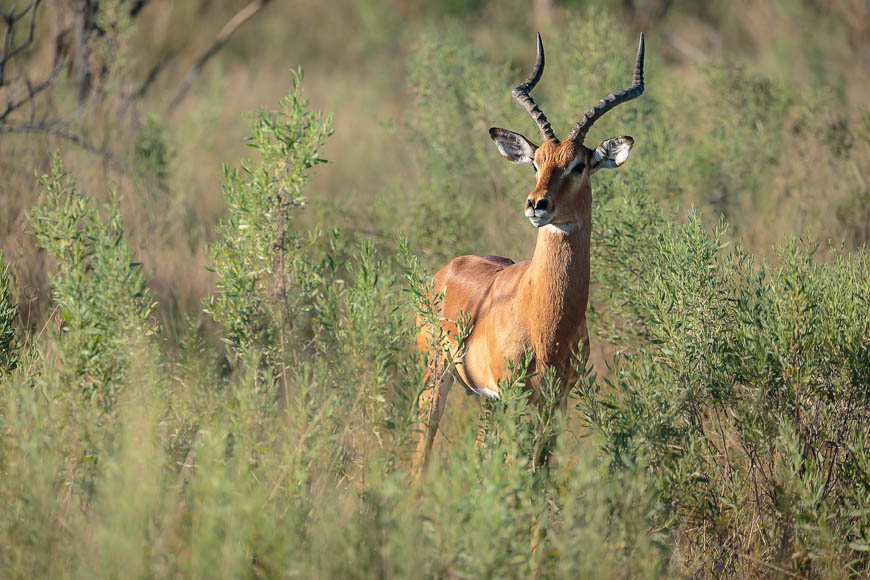
The nearby antelope population were not impressed…!
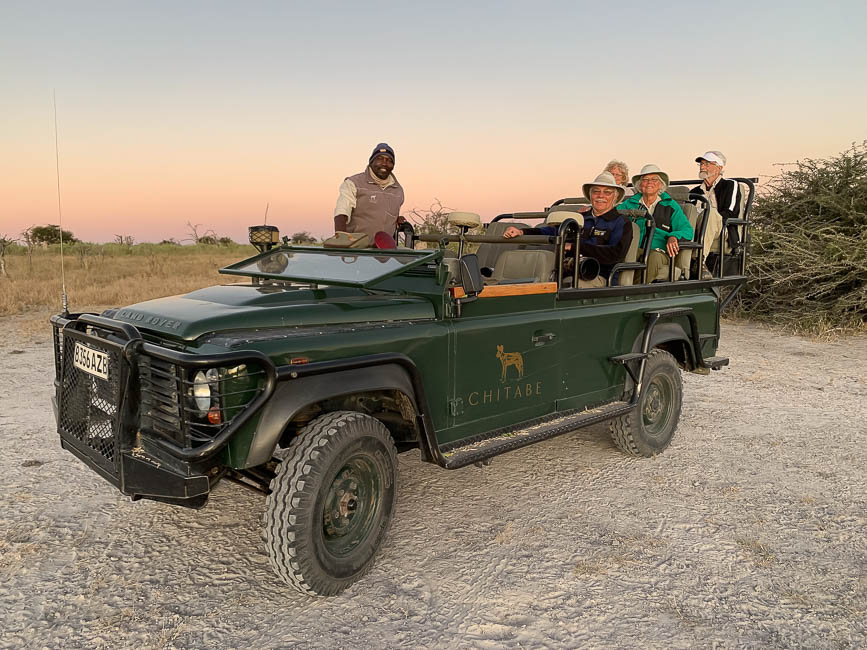
Post leopard sighting “Nature break”!
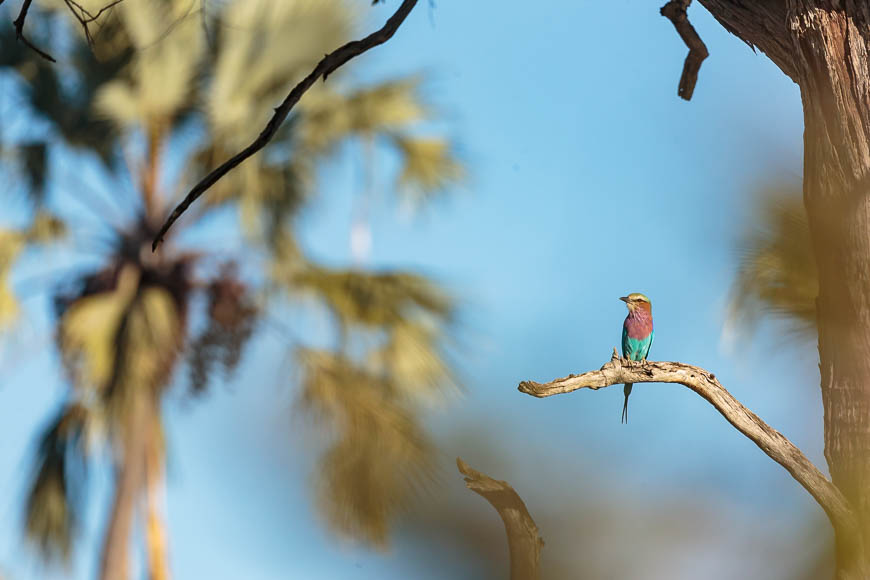
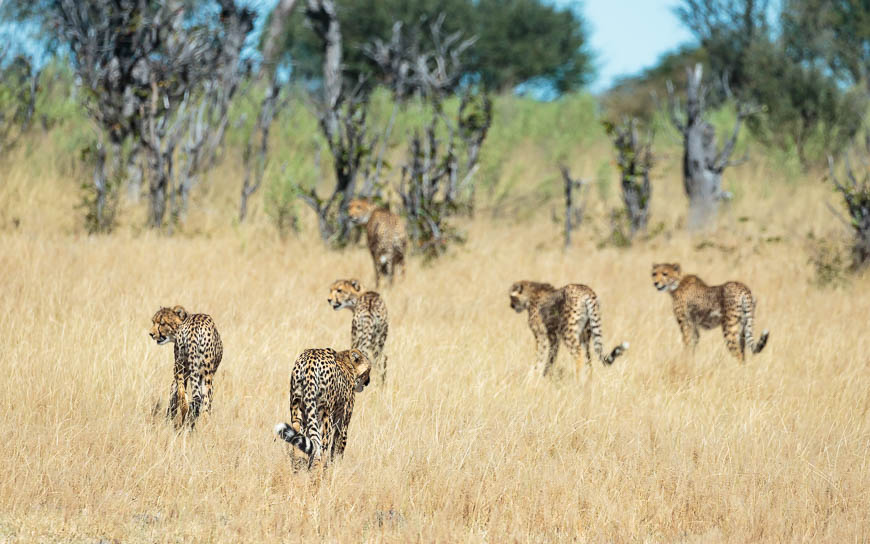
Our last full day gave us a cheetah sighting….but not just 1….a female with her 5 cubs! This female had done a great job to keep so many cubs alive through the wet season and it was interesting to see the slight nervousness that the cubs had towards vehicles, given that they have been born during the pandemic when visitor numbers were very low!
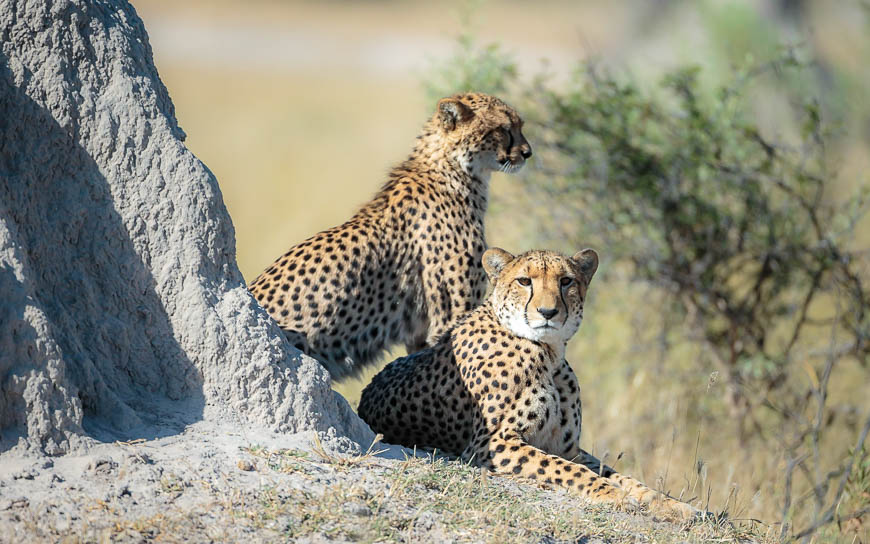
The mother posed…
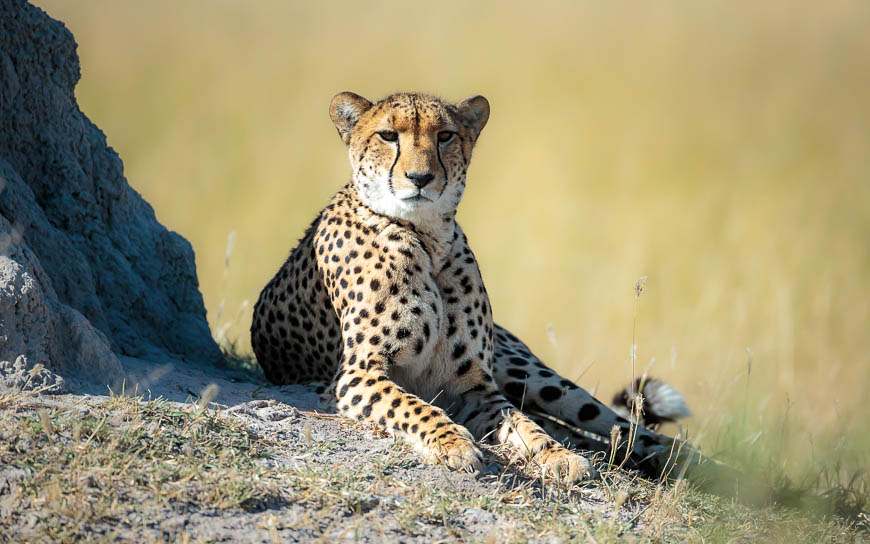
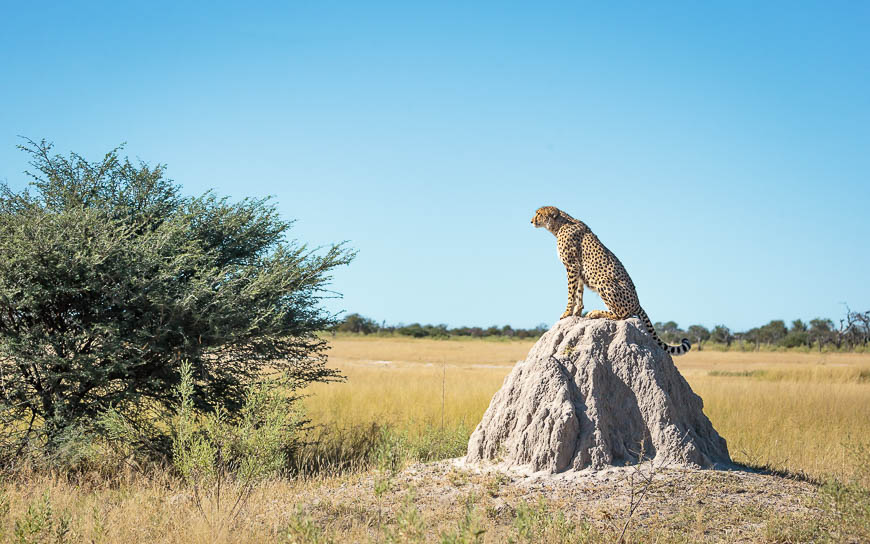
…climbed
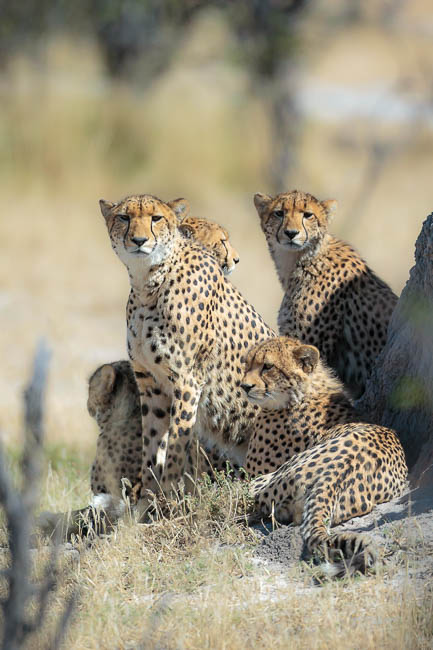
..and led the cubs off in search of food.
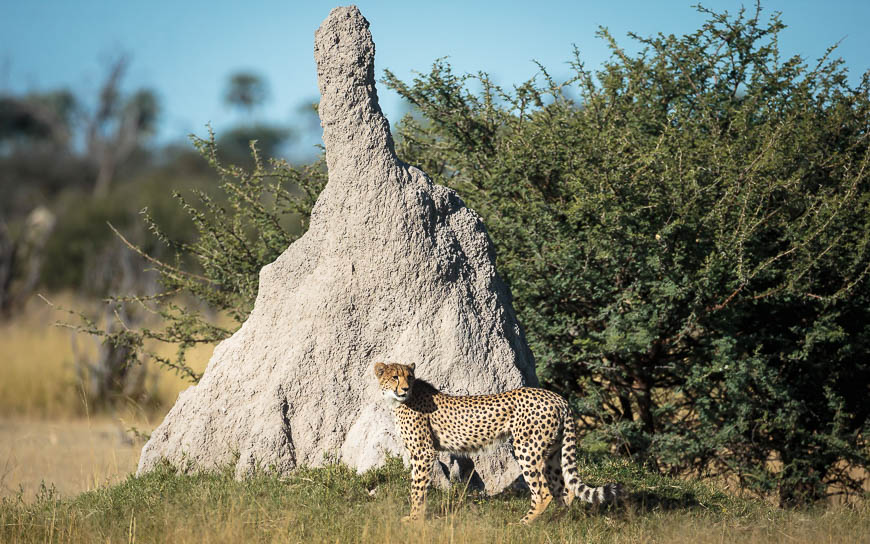
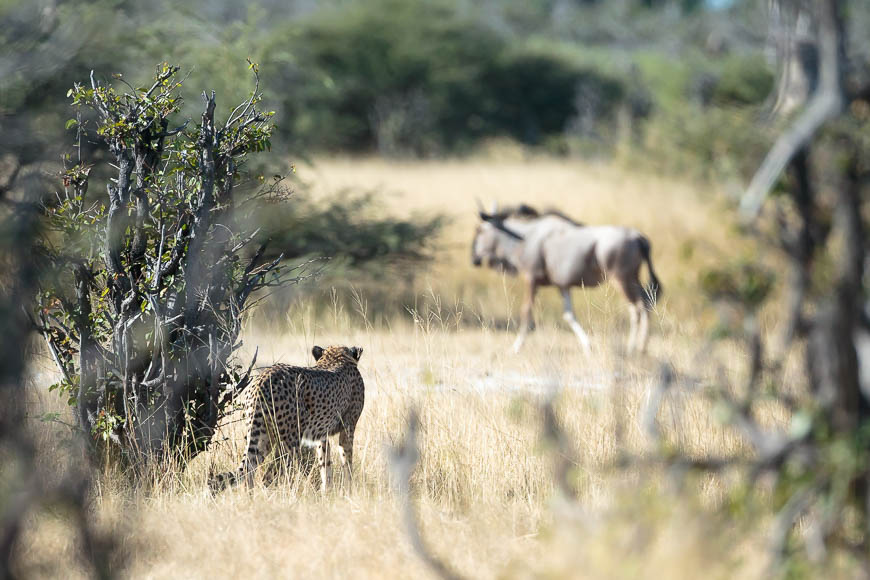
We stayed for the whole day, hoping that she might hunt and she did have a brief pursuit of a wildebeest but pulled up short with a slight limp; perhaps the rough ground was not safe to cross at high speed!
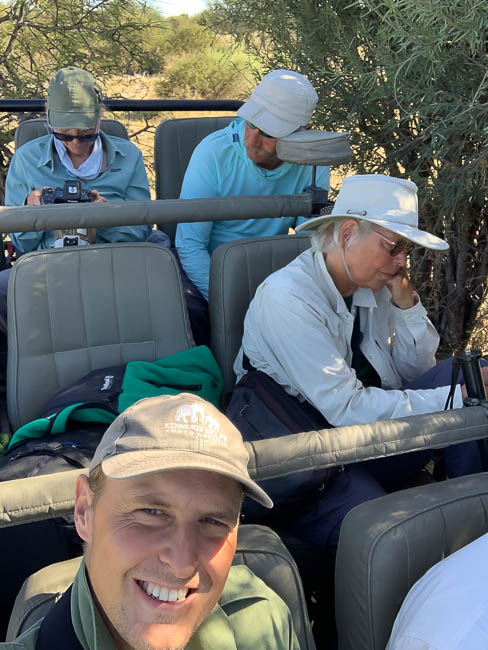
Waiting in the shade for cheetahs to hunt!
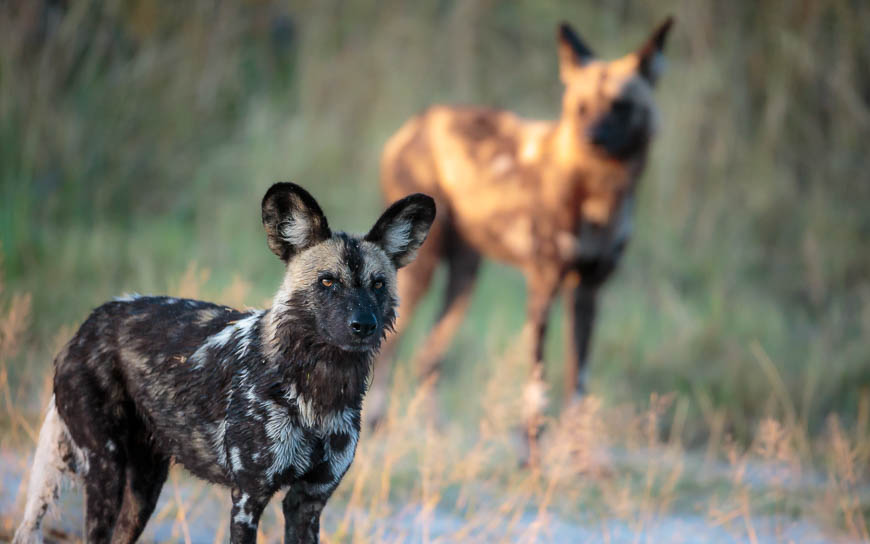
On our final morning, we had time just for a short morning drive. We set out very early, had a super sighting of wild dogs who chased and caught a baby kudu, and then we called it a day and headed back to camp! That seemed a sensible and appropriate time to call it a day, pack our bags and head back to the airstrip for our outwards flights.
There are several factors that make Botswana a special destination for photo safaris; the cool temperatures compared to many other areas of Southern Africa make for a comfortable experience and long photographic mornings; added to this, the sun rises late (06.50 in winter) so very early starts are not necessary; the game is excellent with good densities and excellent variety; all the encounters we had were with individuals which were highly unconcerned about vehicles, giving an authentic insight into their lives; the surroundings of the bush are varied (grassland, woodland, thorn thicket and marshes) giving a range of habitats, backgrounds and opportunities; the sandy soils below the grass allow access in a way that muddy/clay soils do not so it’s rare that an area is beyond reach, unless the water is very deep; concessions allow for off-road driving which is important when positioning the vehicle and following the action.
I will be back in Botswana in July 2023 on a special safari that takes us through several different parts of the Okavango, as well as time in the Linyanti and in the Mkgadikgadi Pans further south. Later in the year will mean shorter grass, denser game but still water in many of the channels which makes the Okavango unique. If you would like to know more, please get in touch or read more here.
